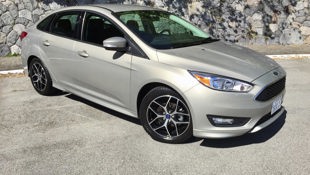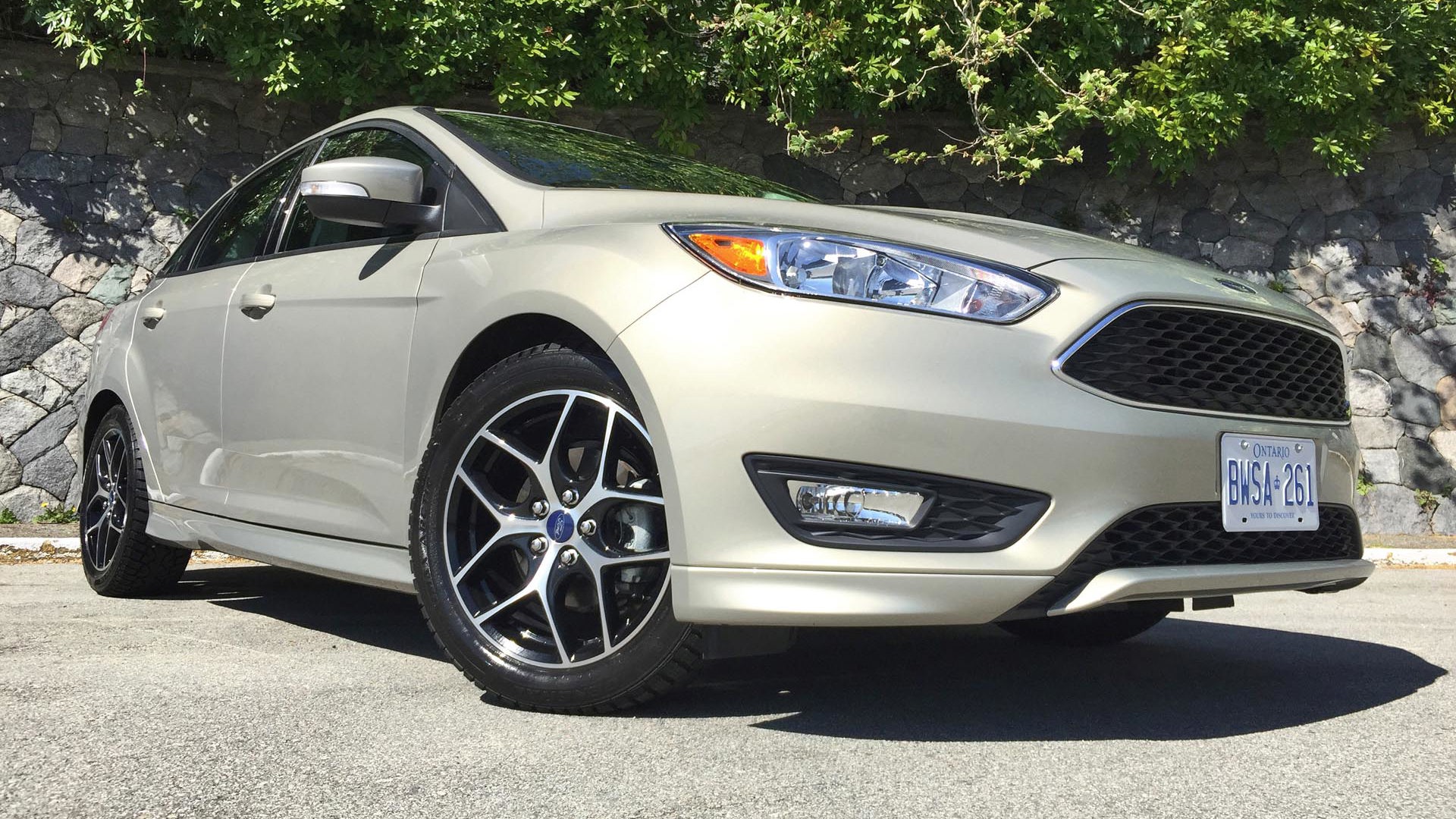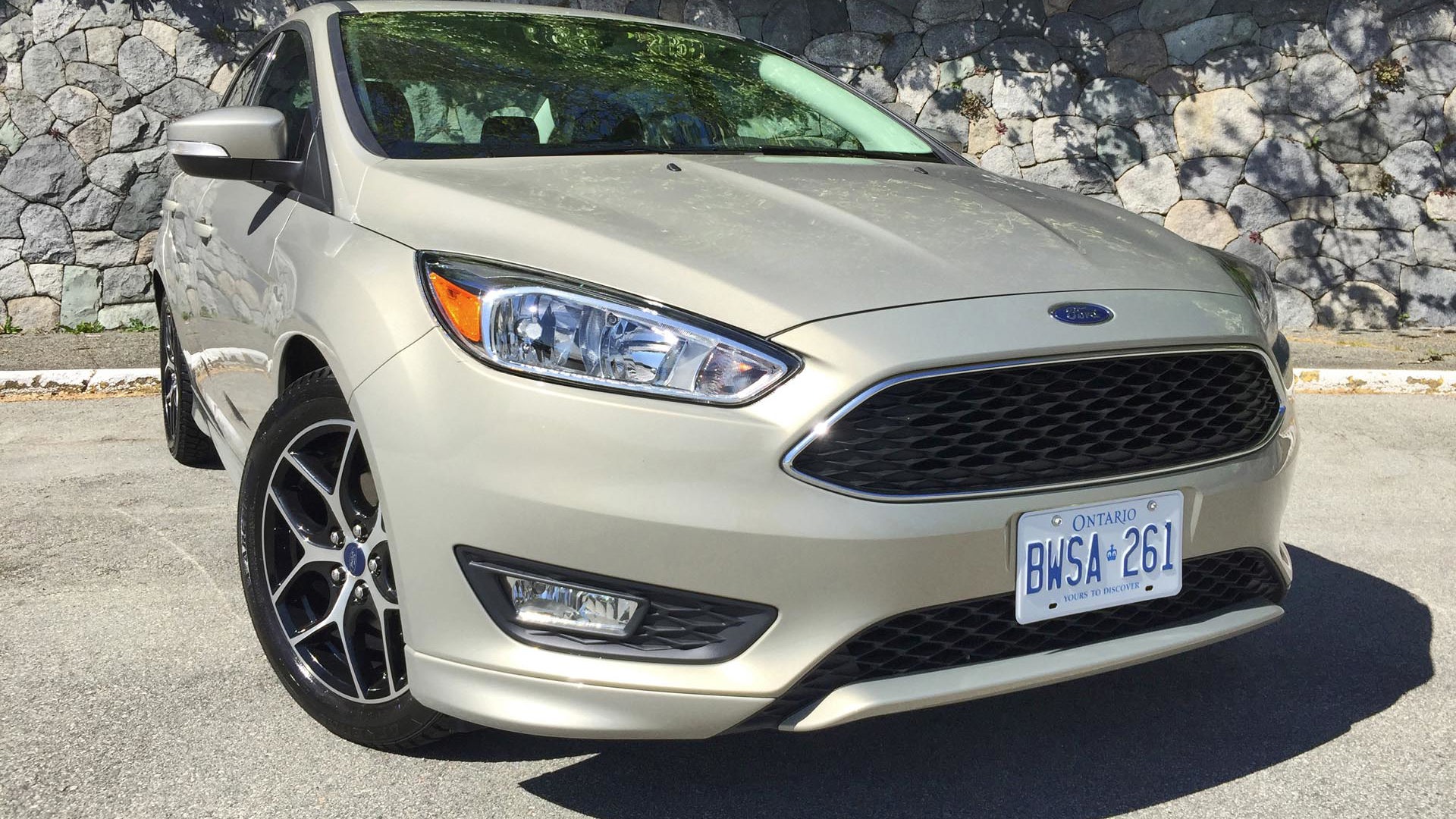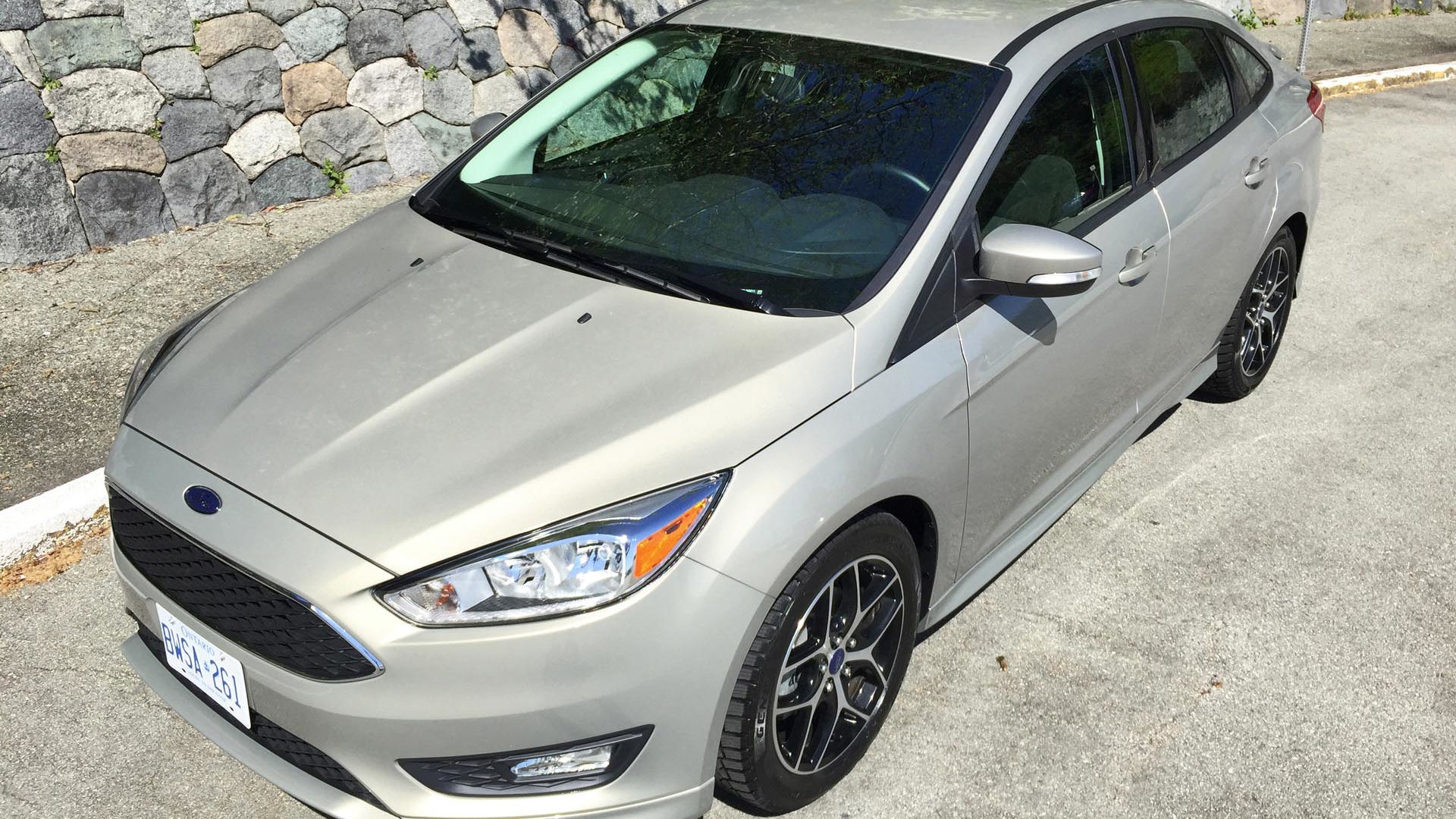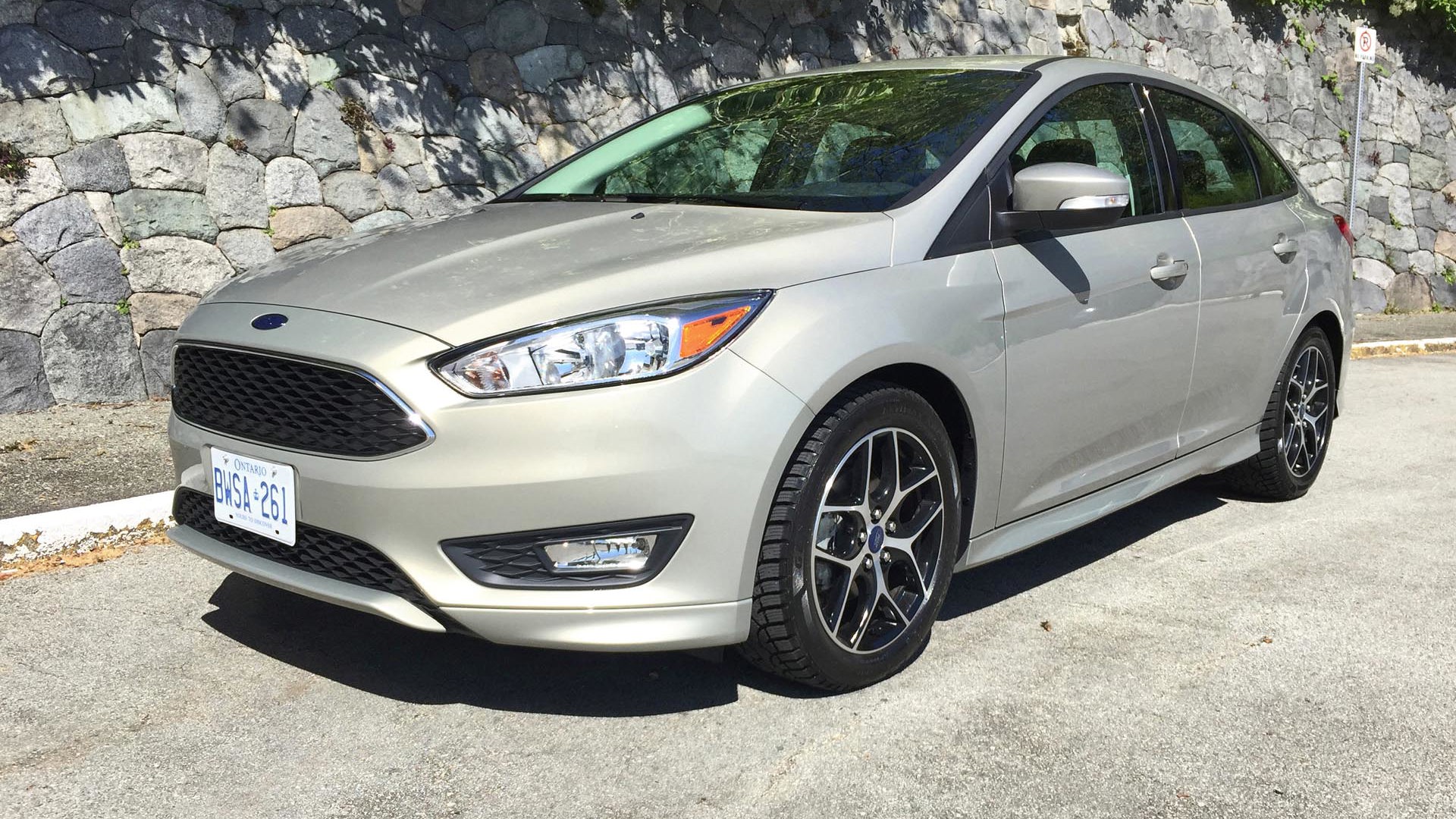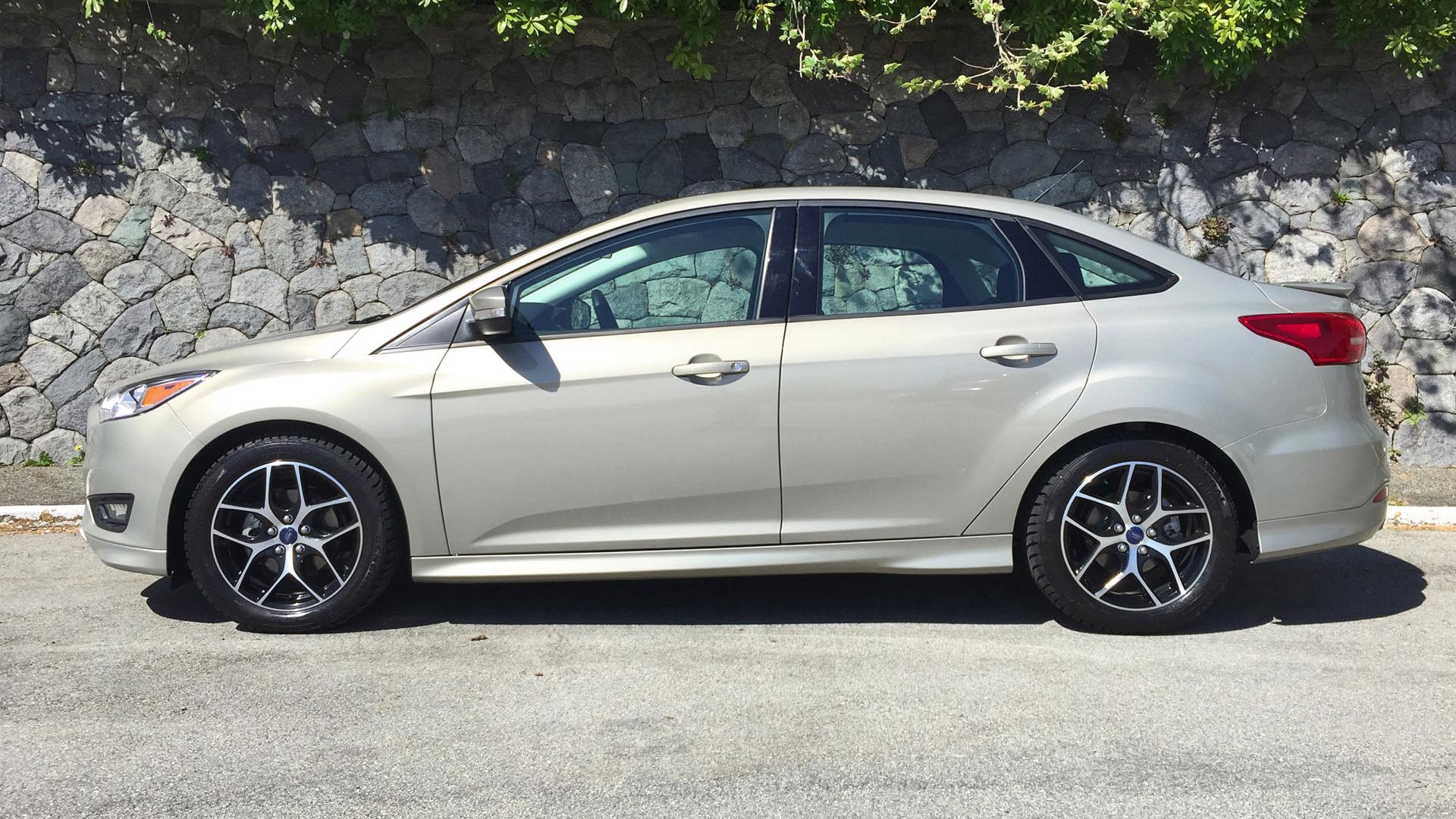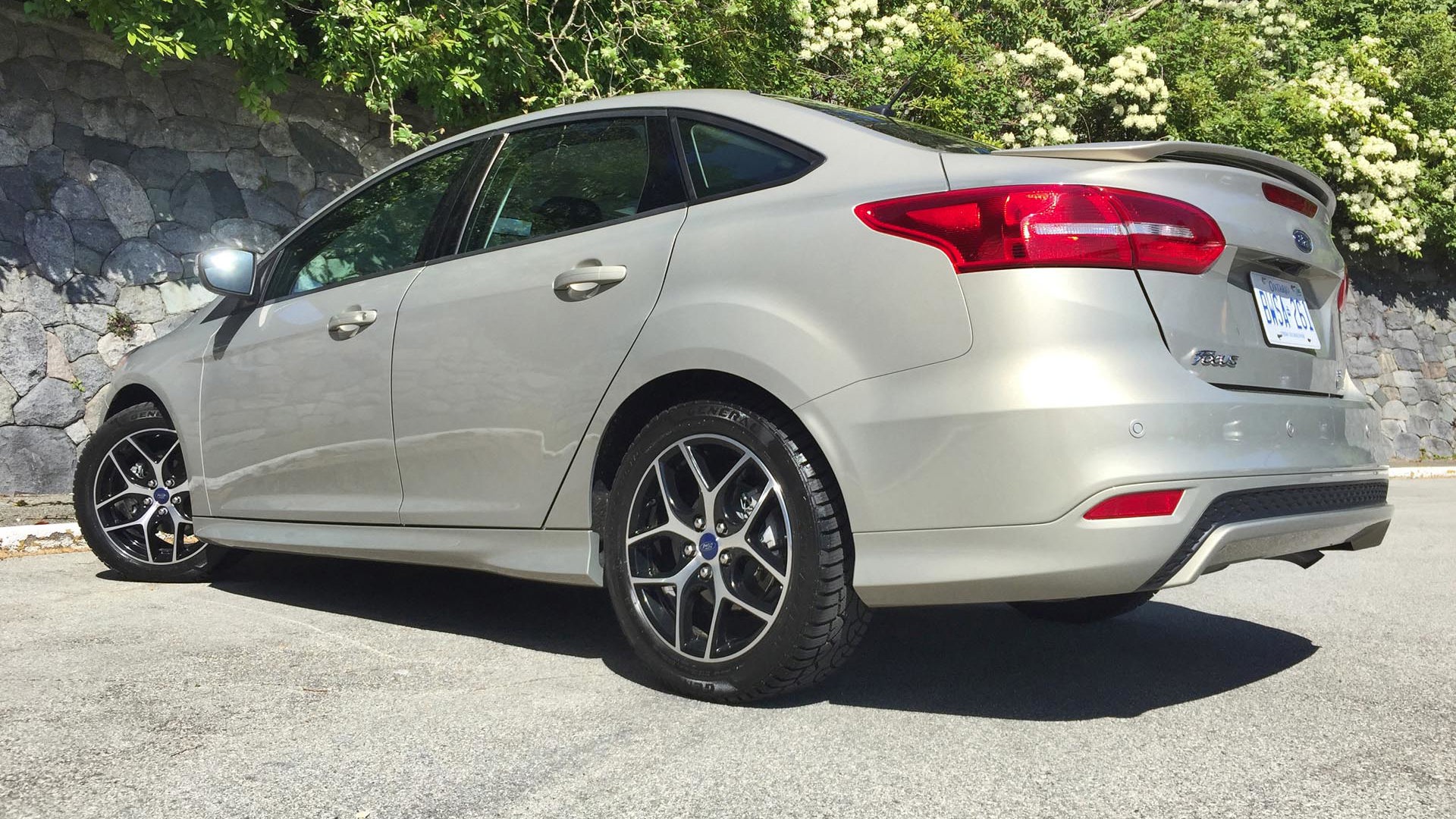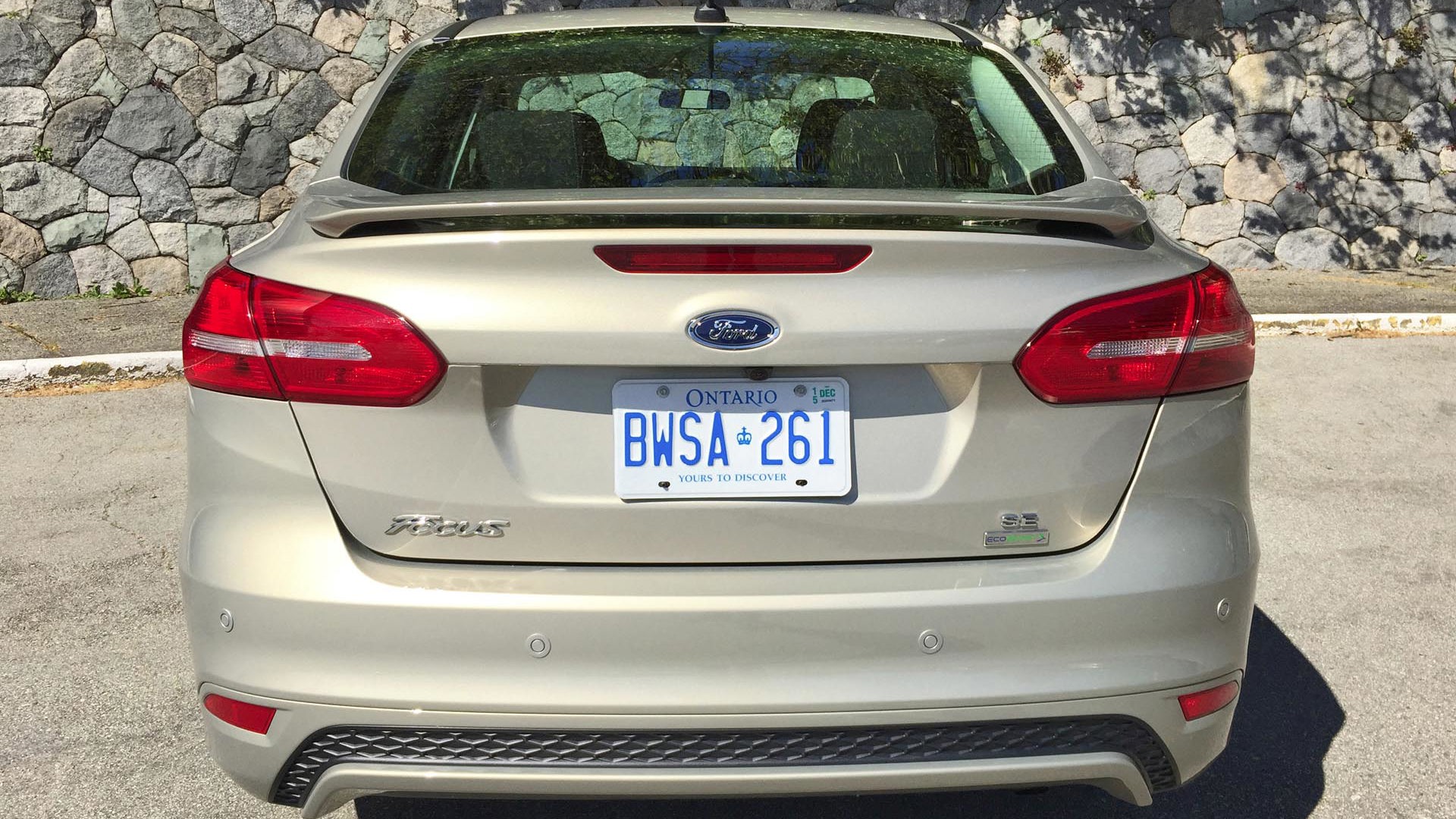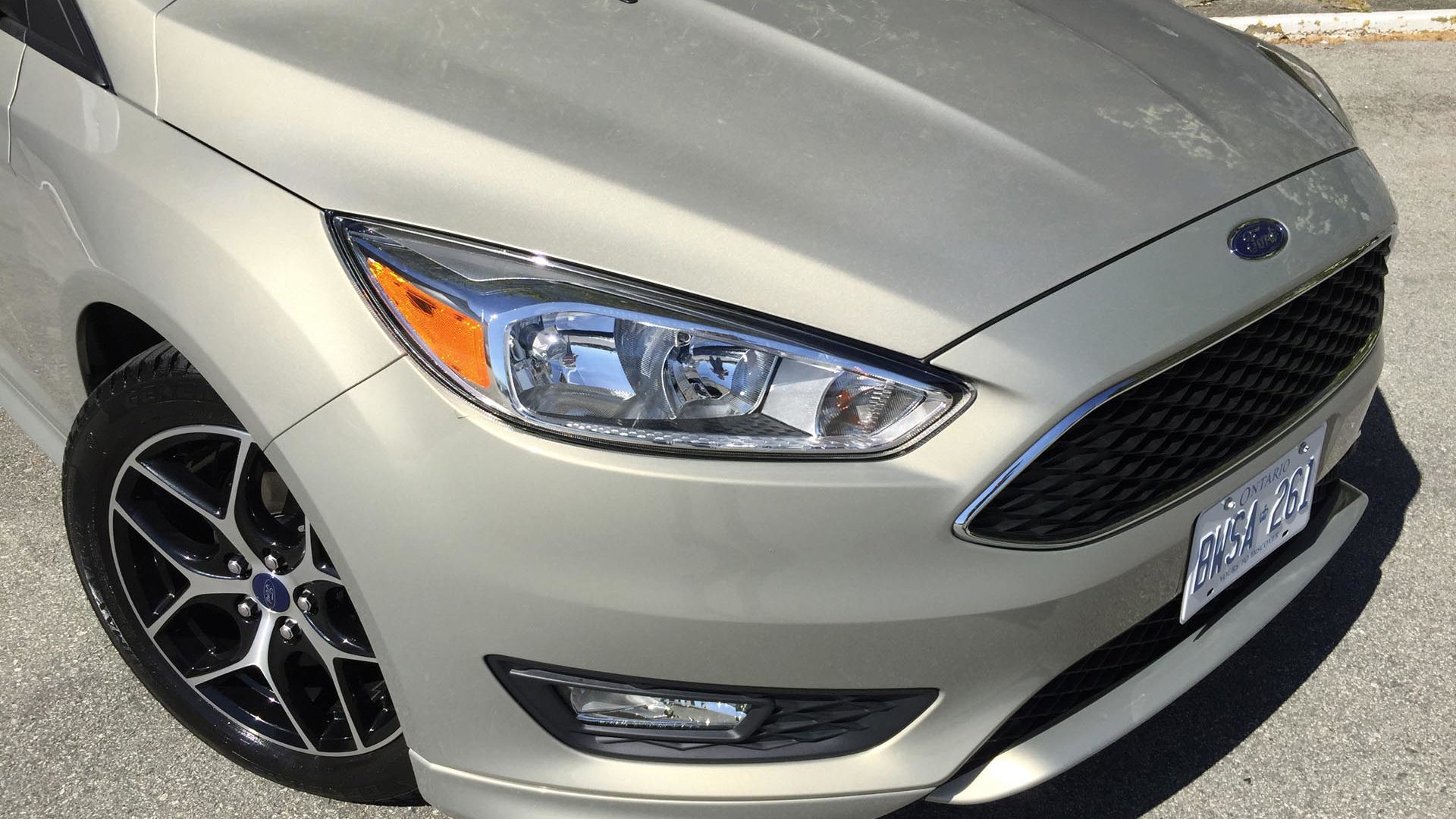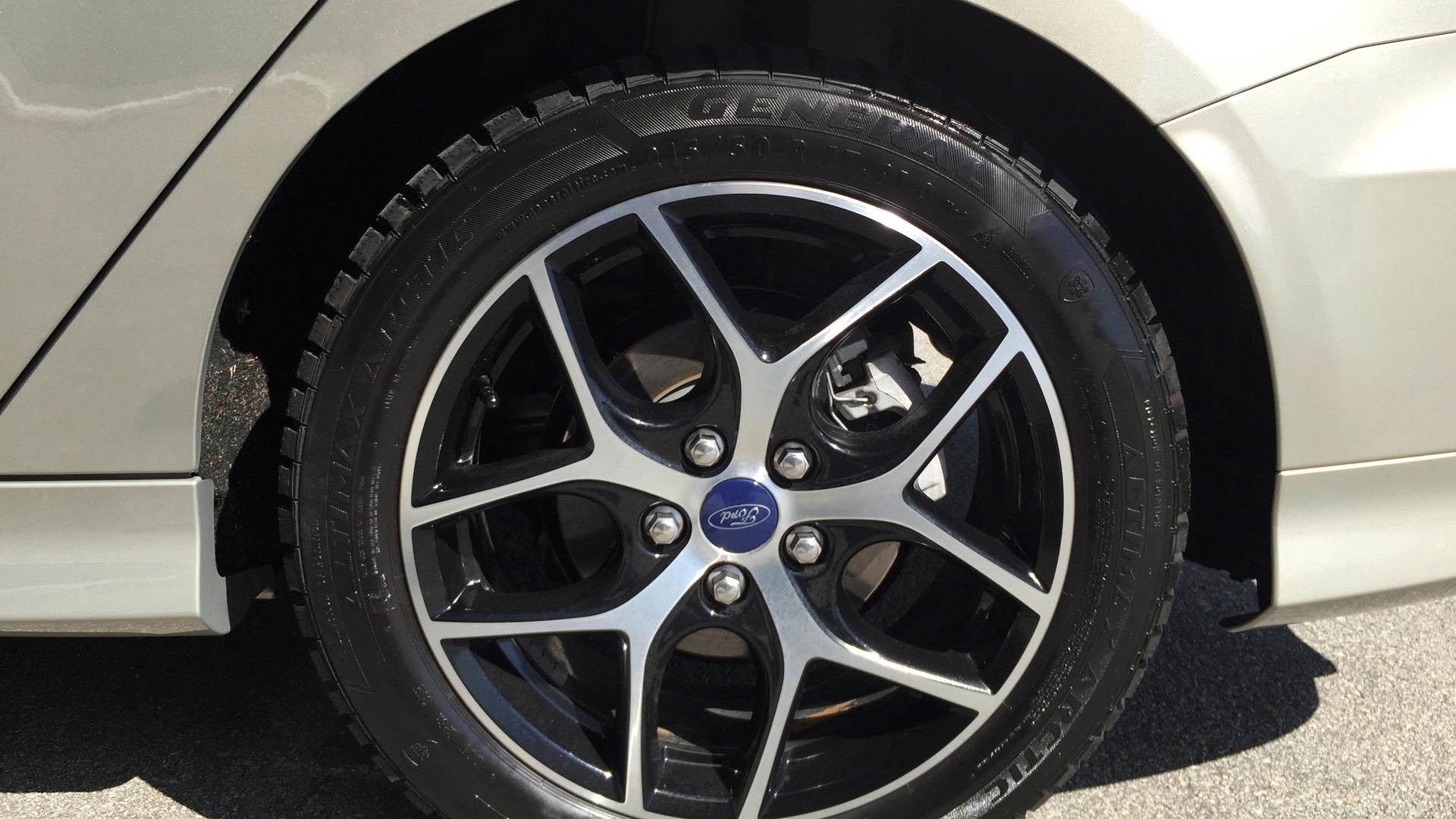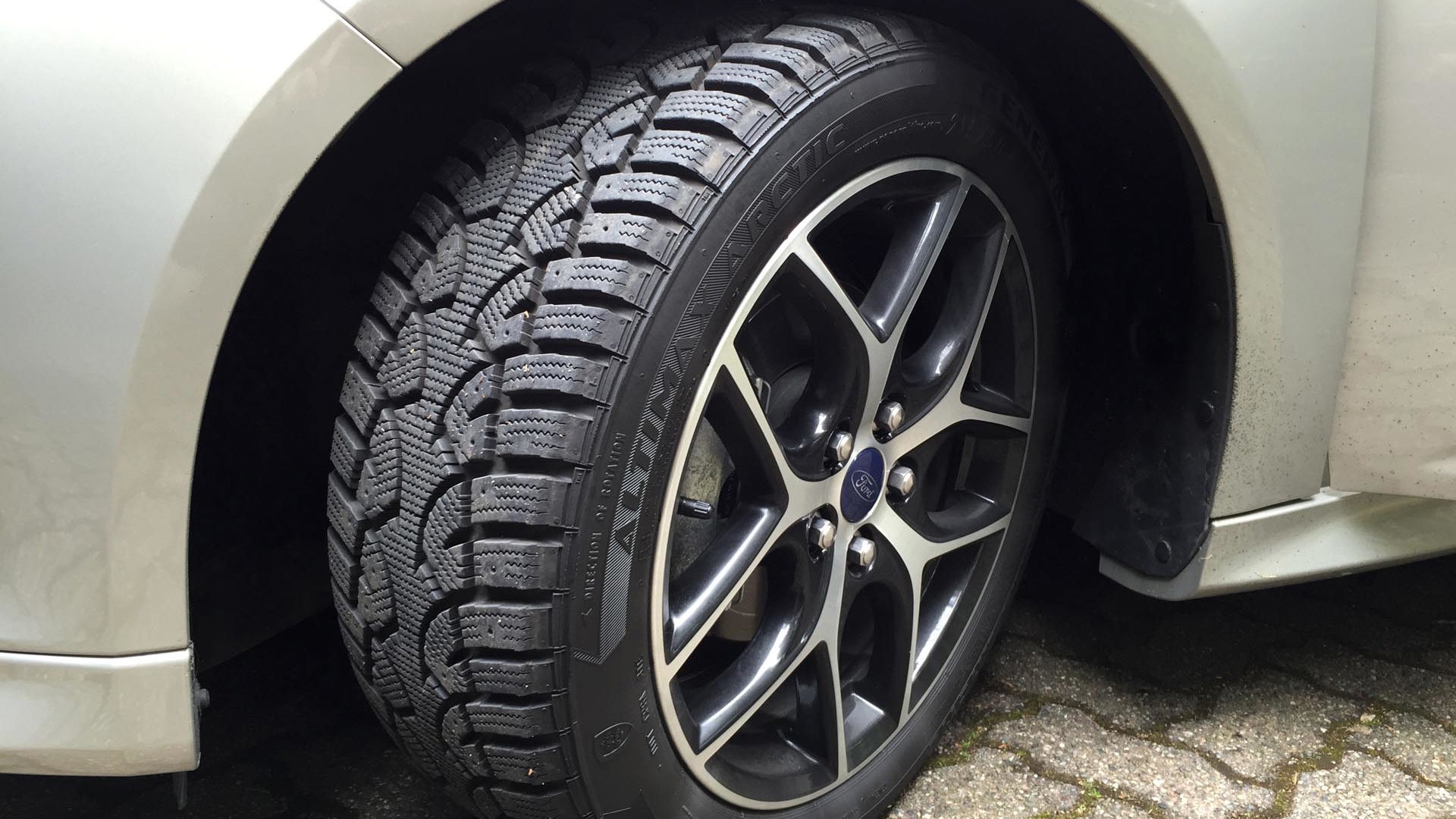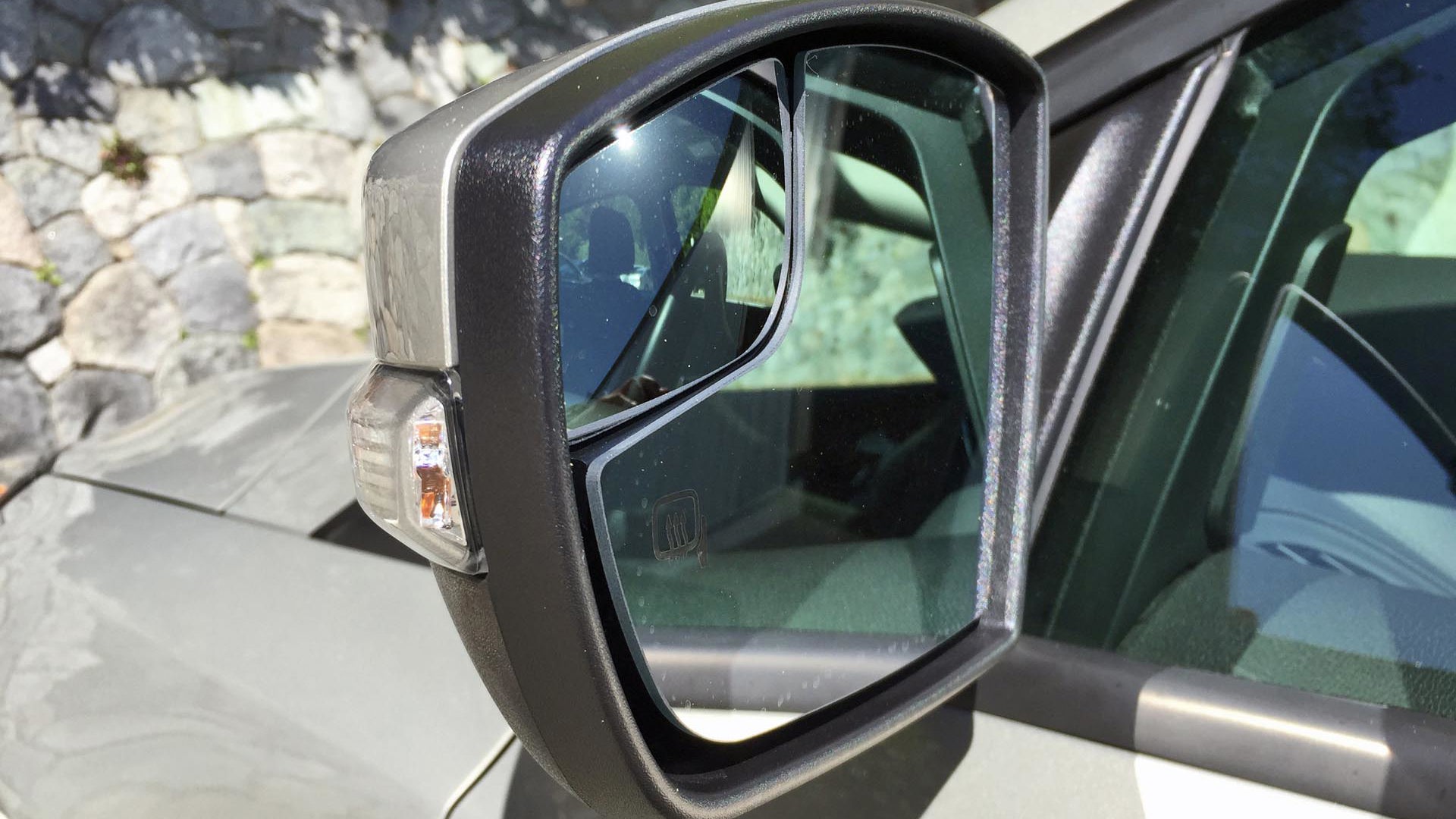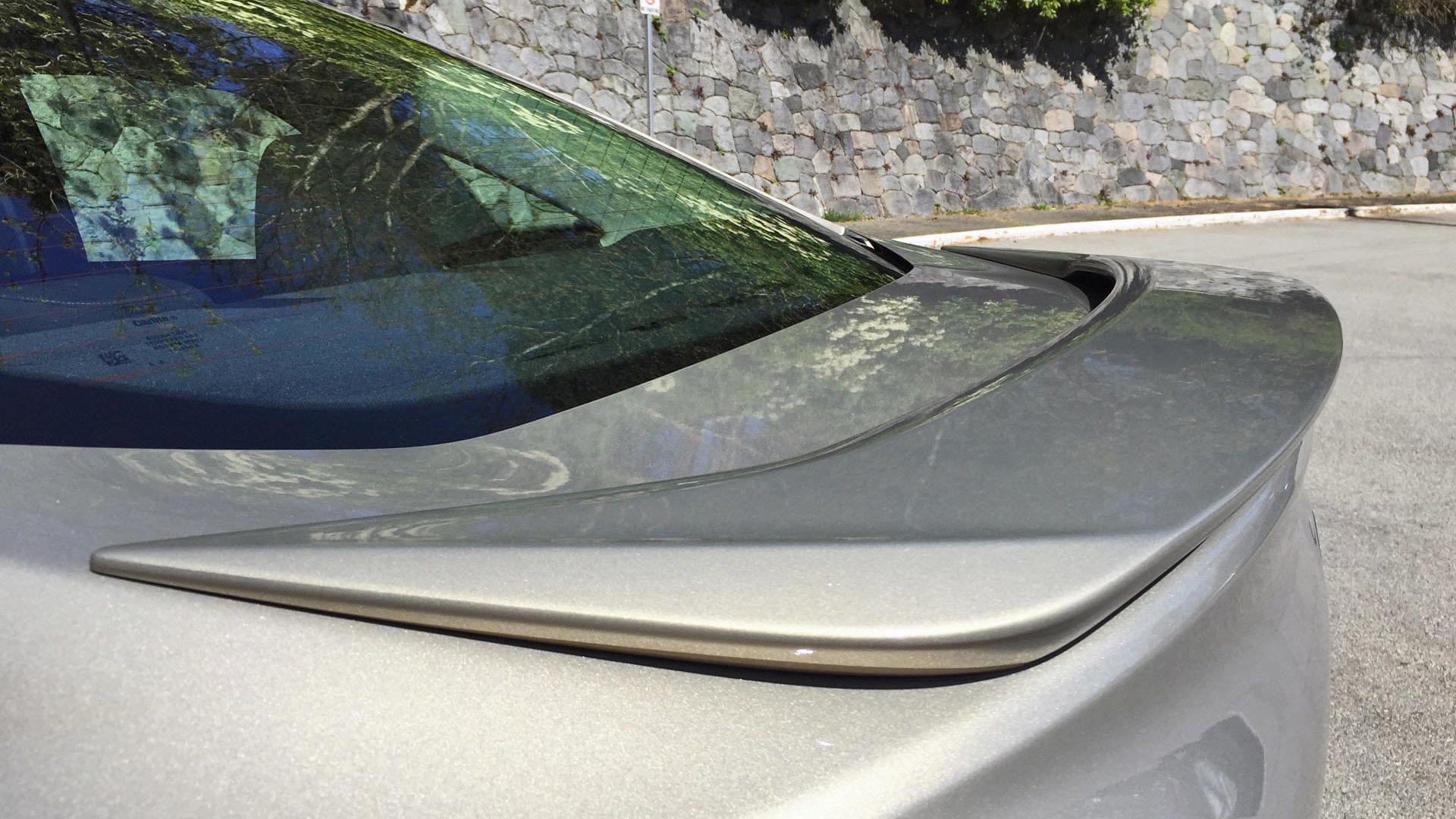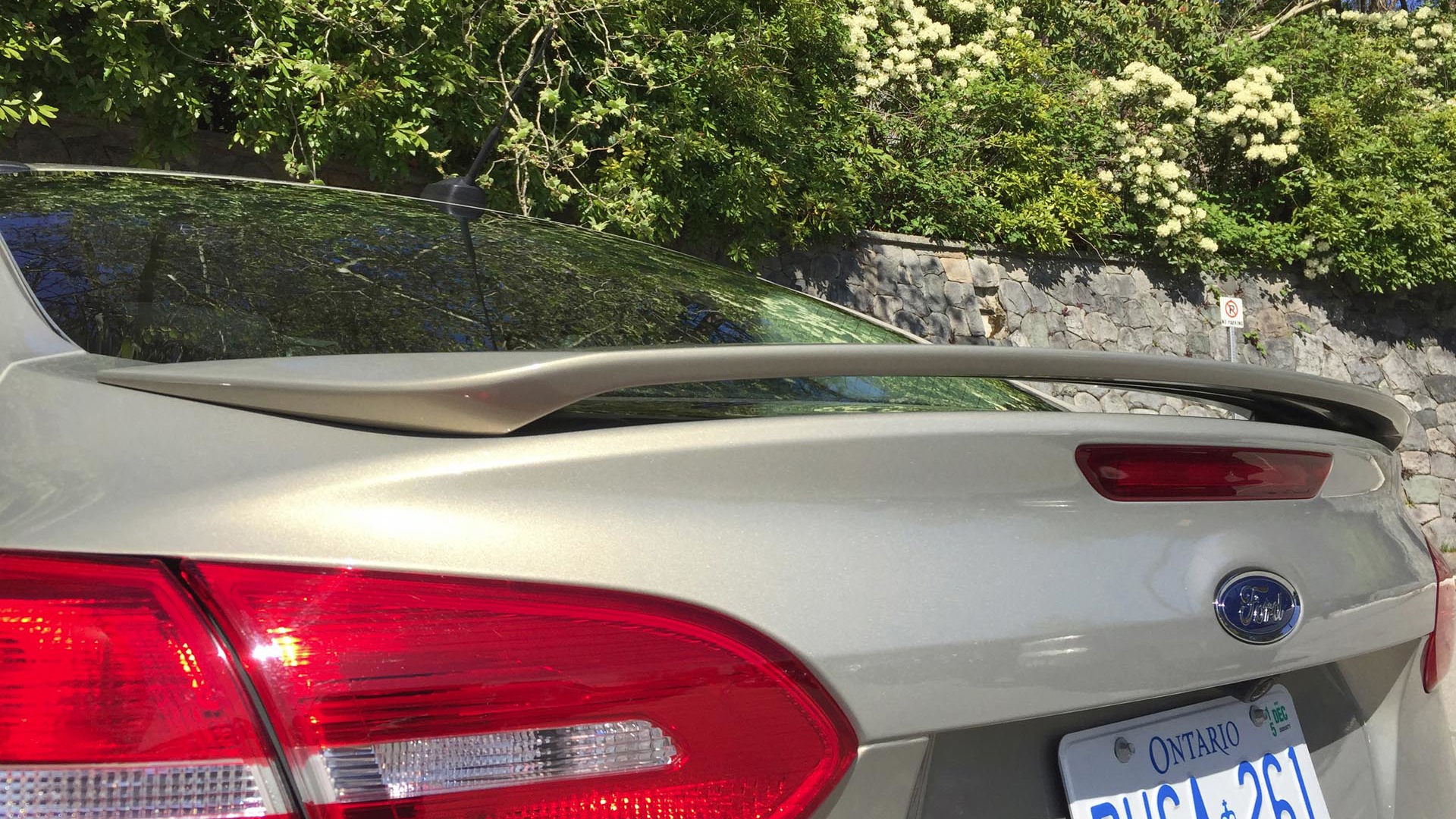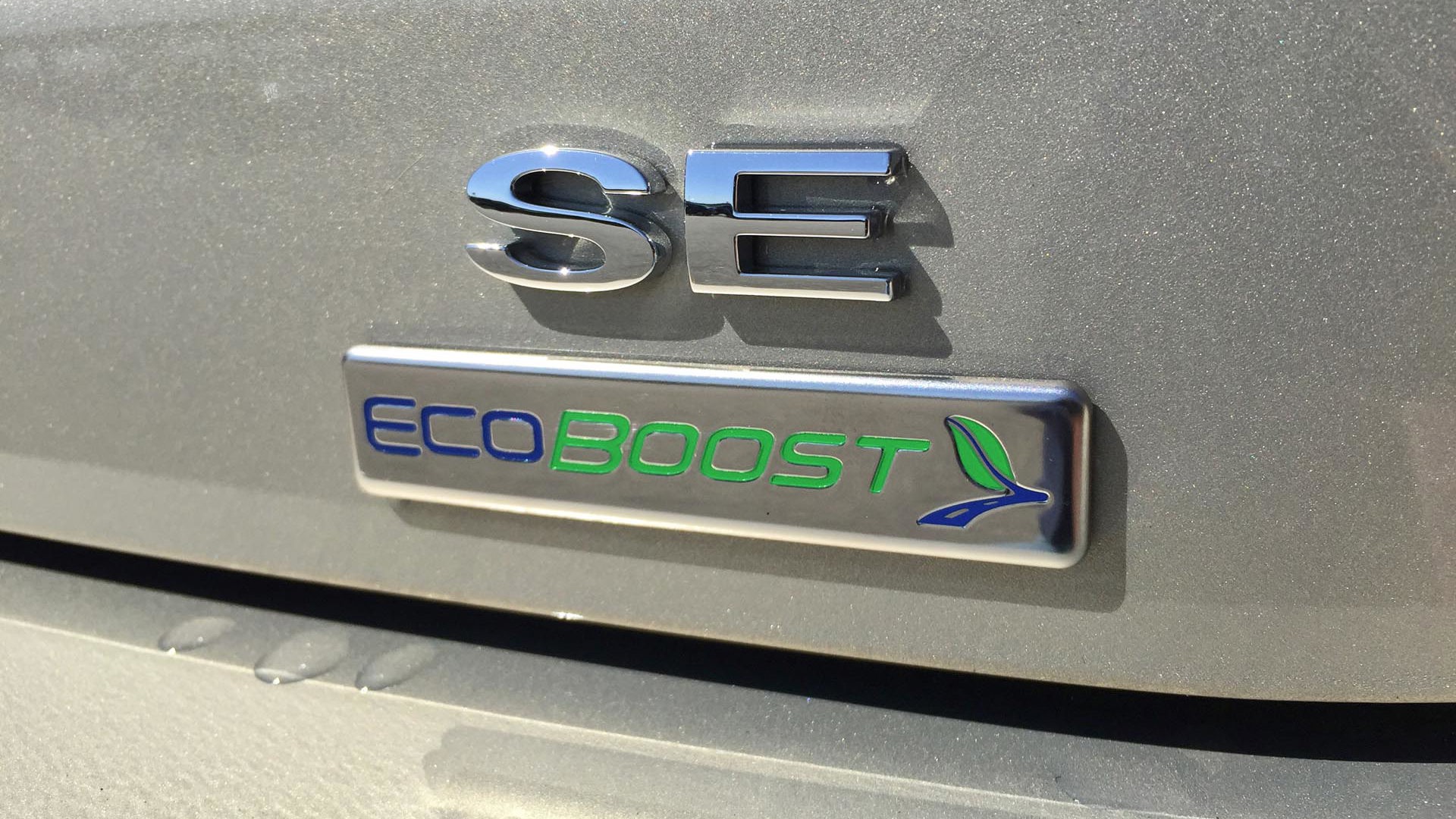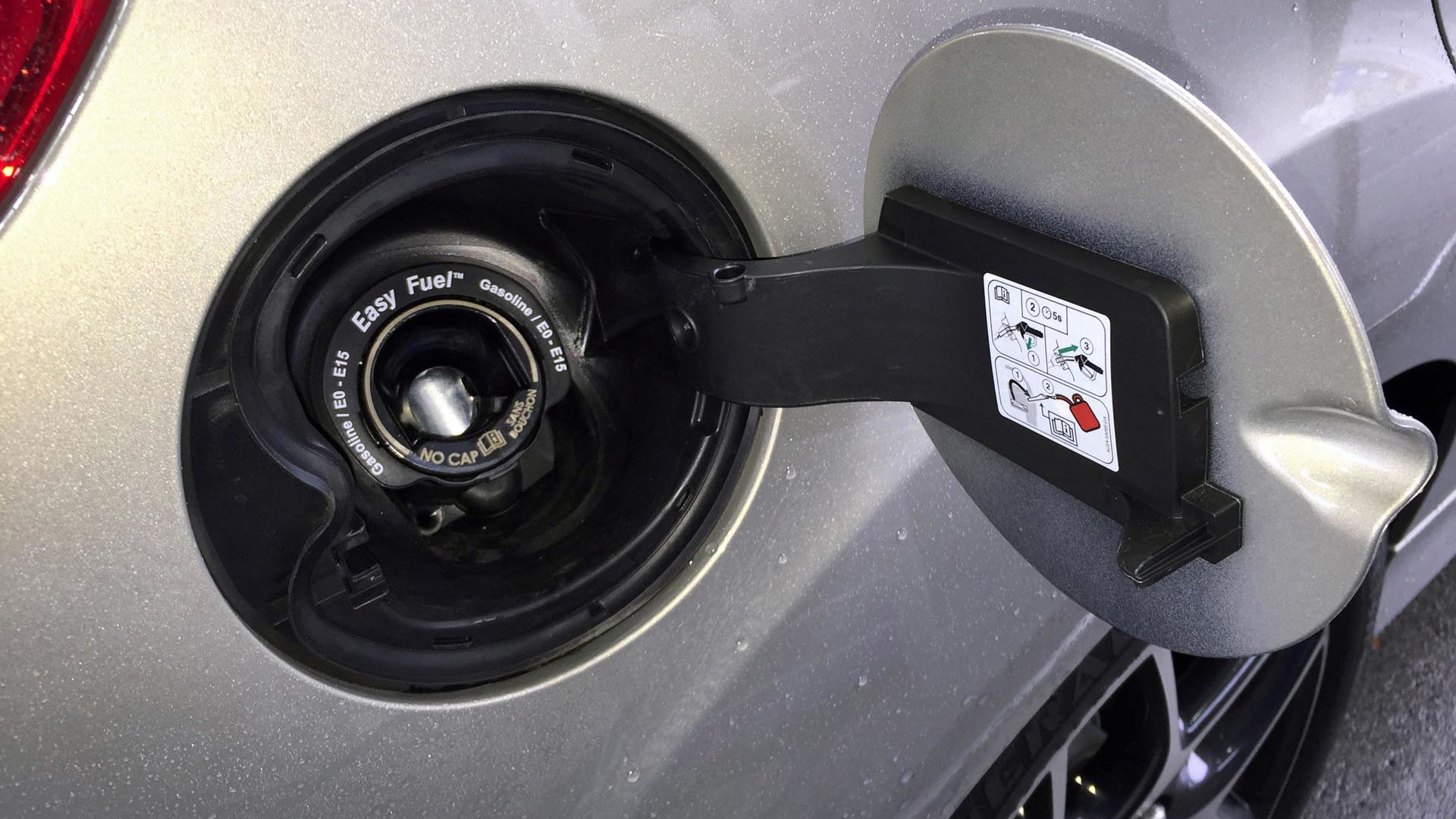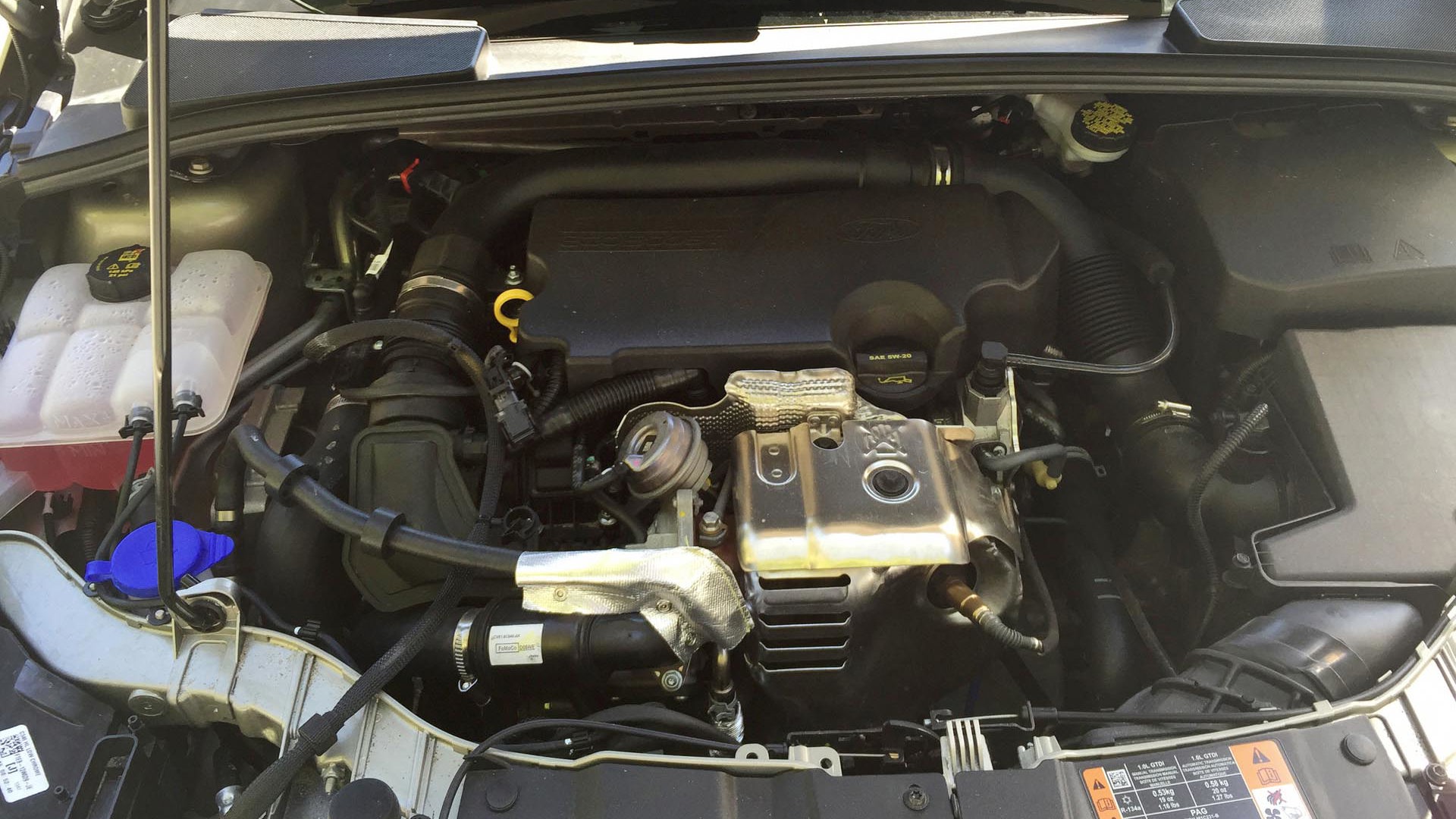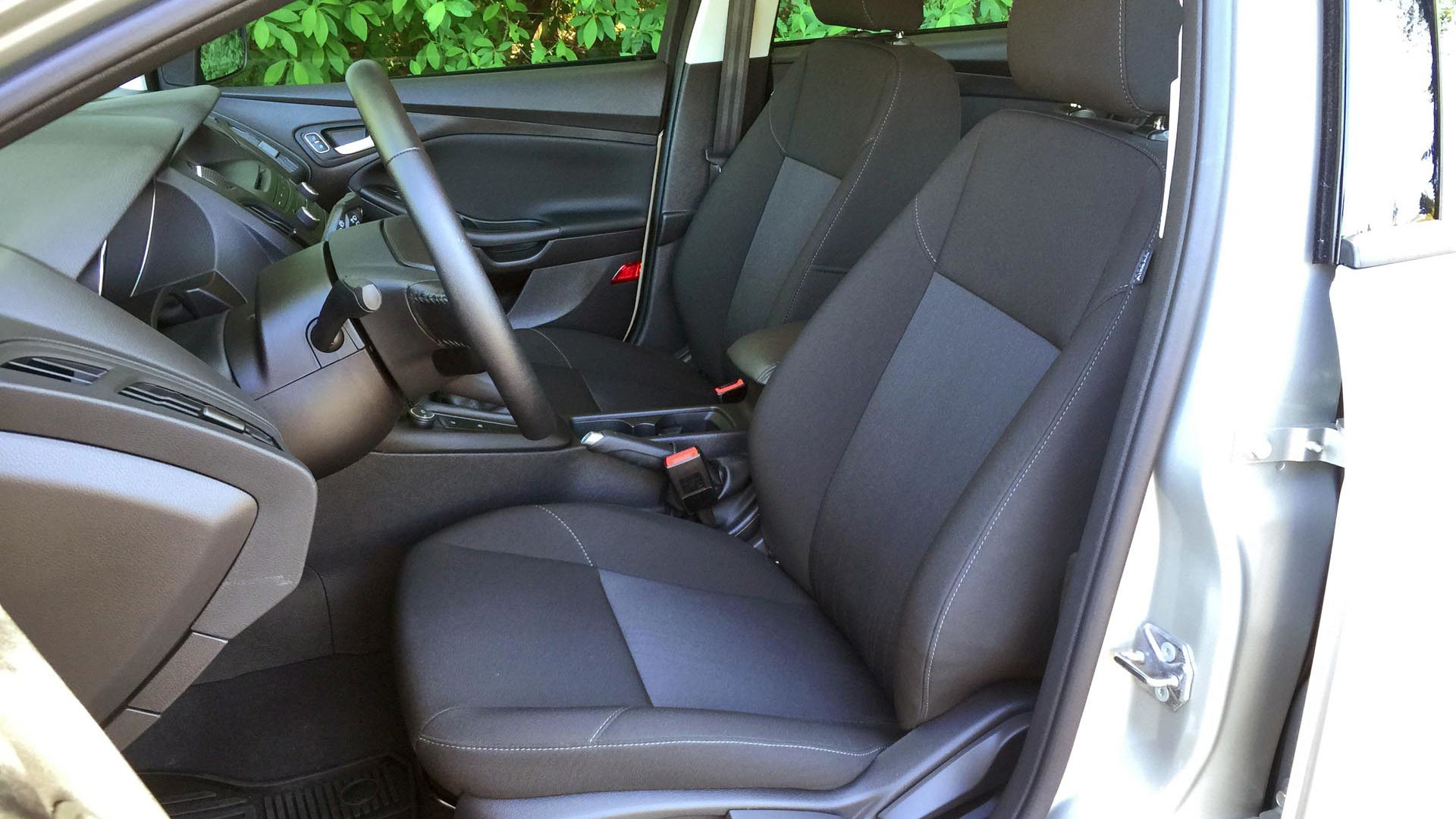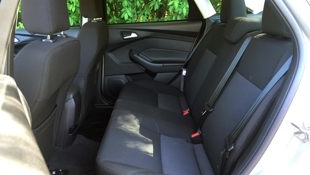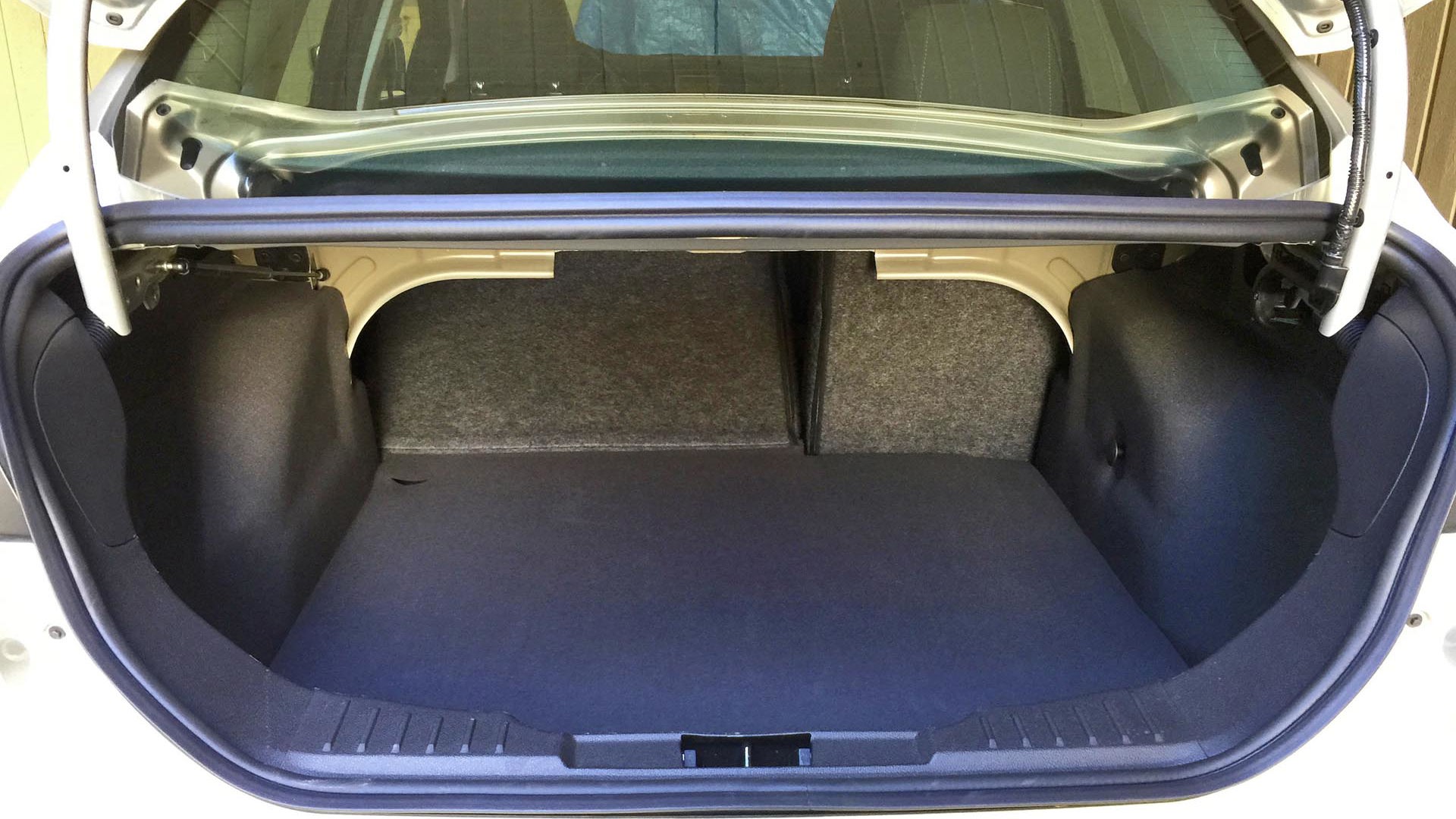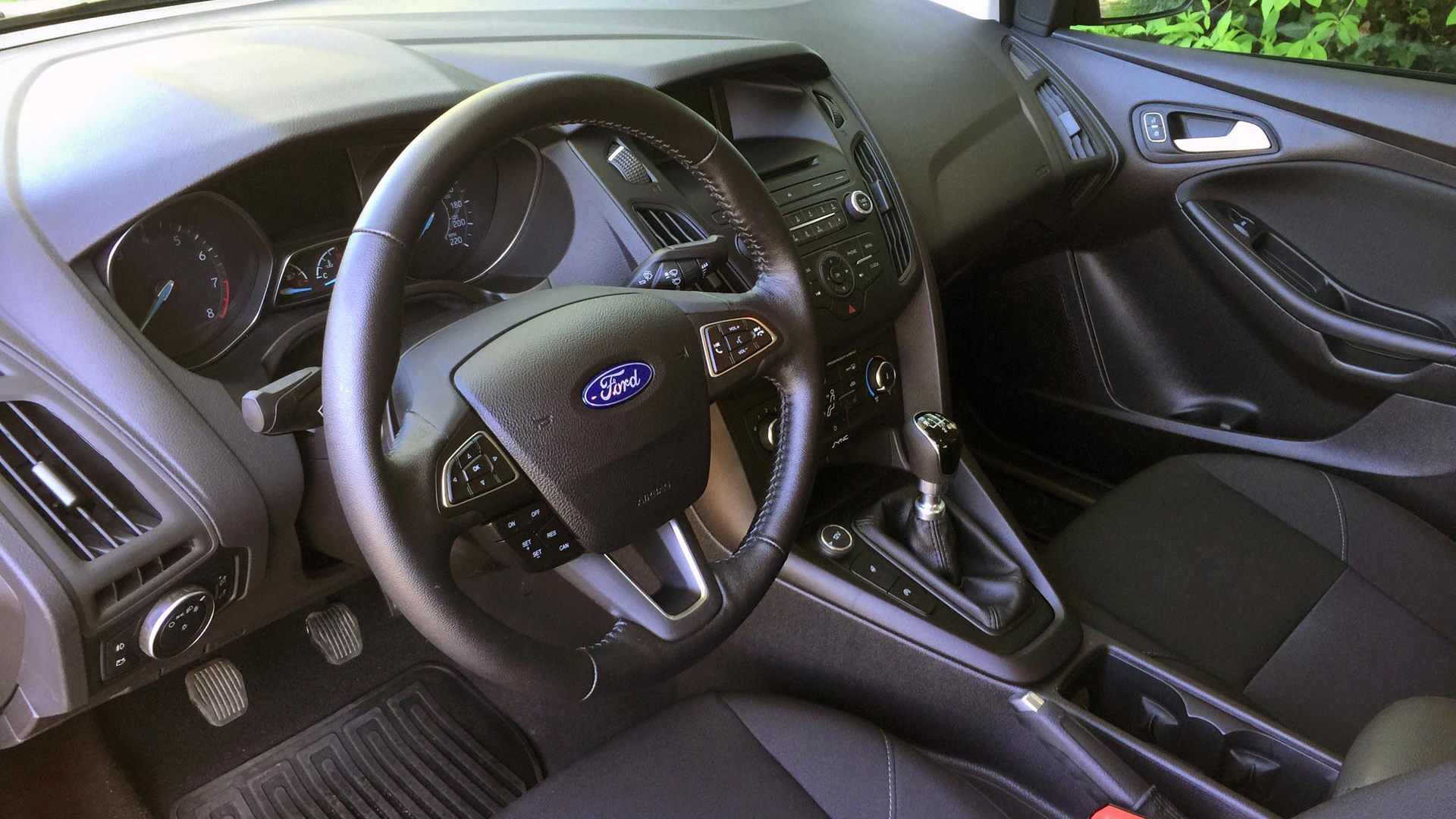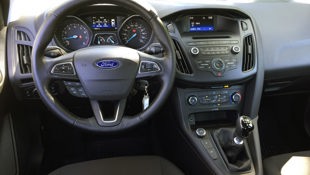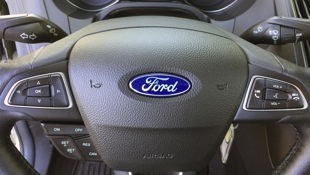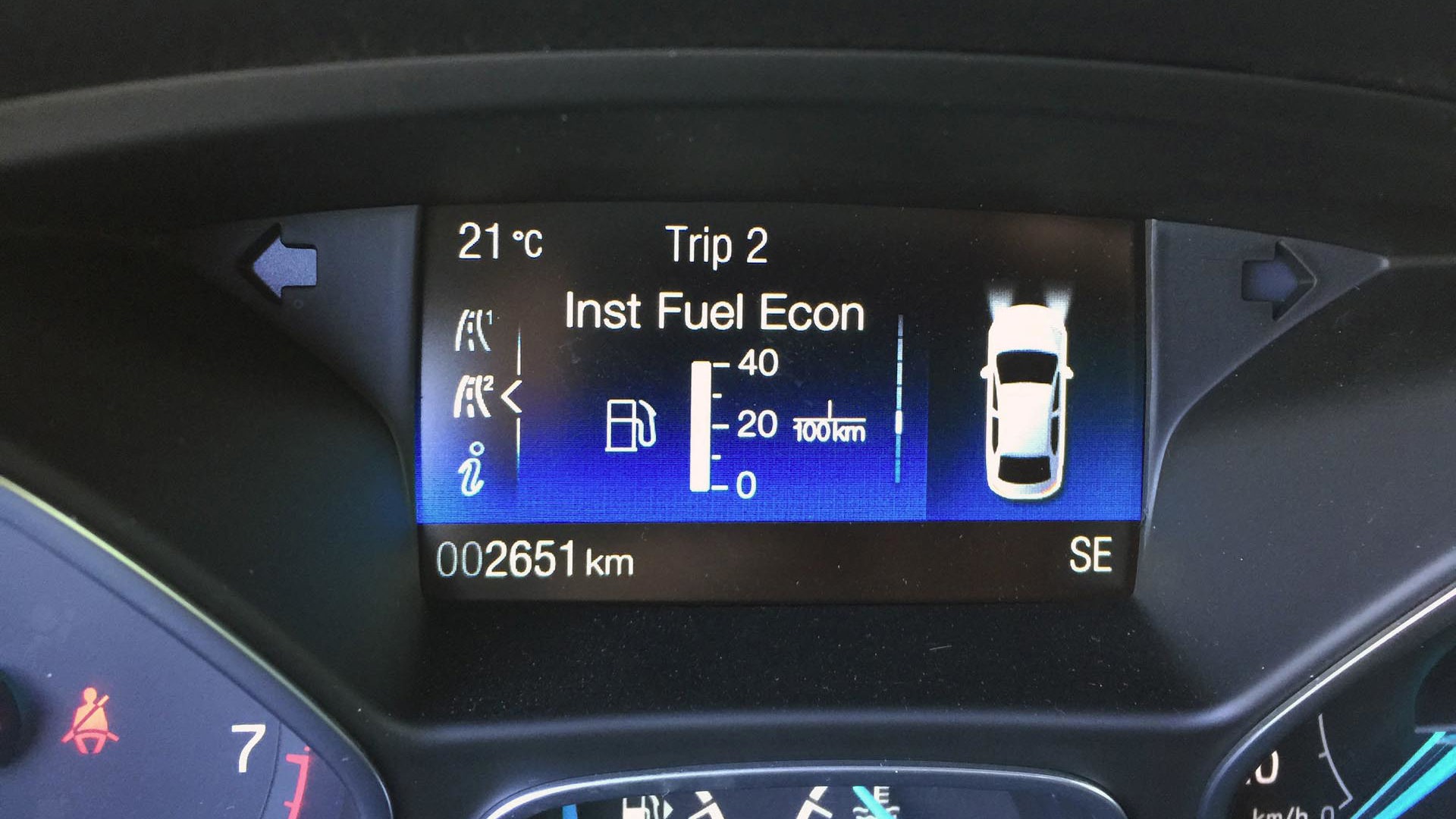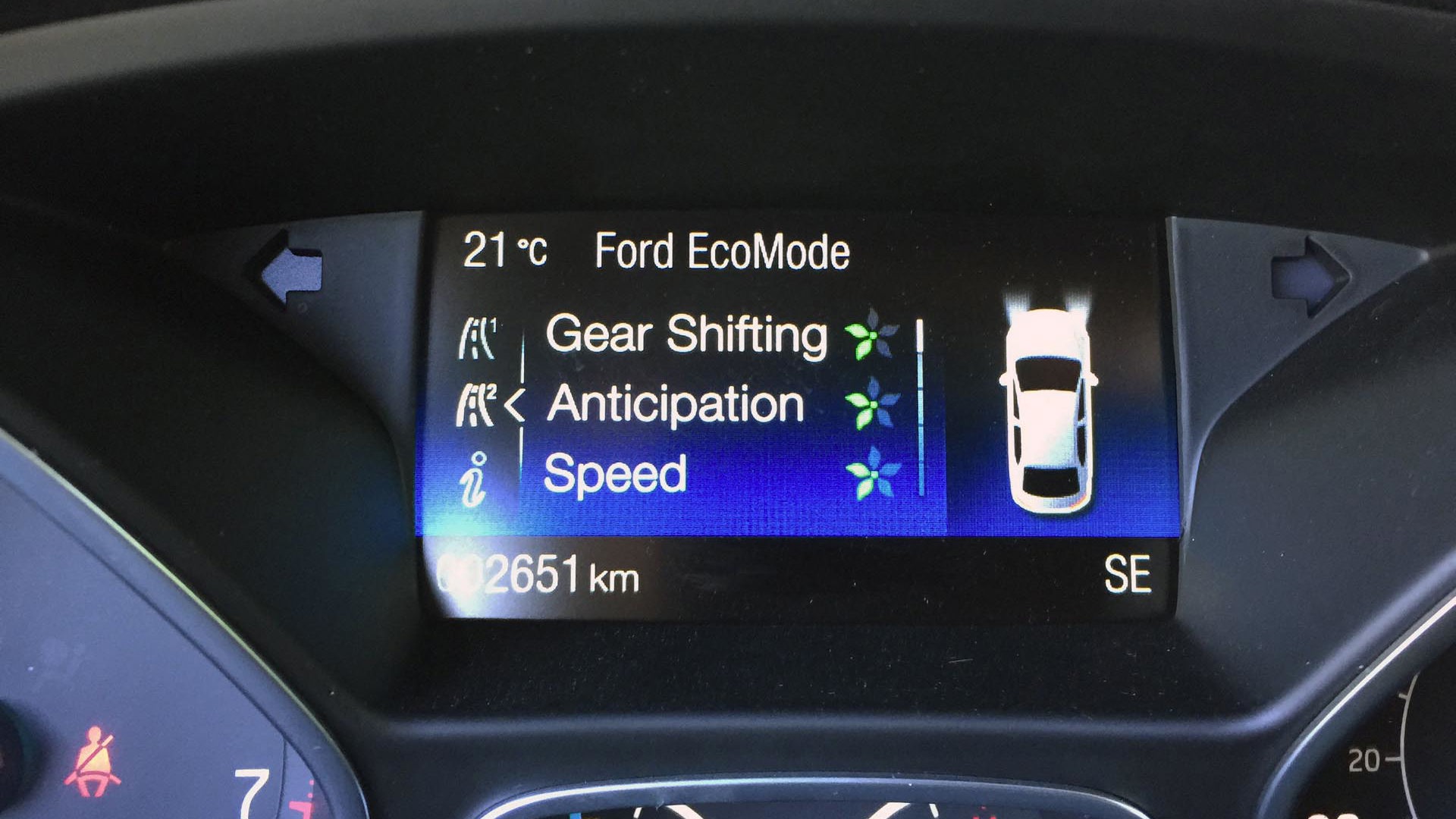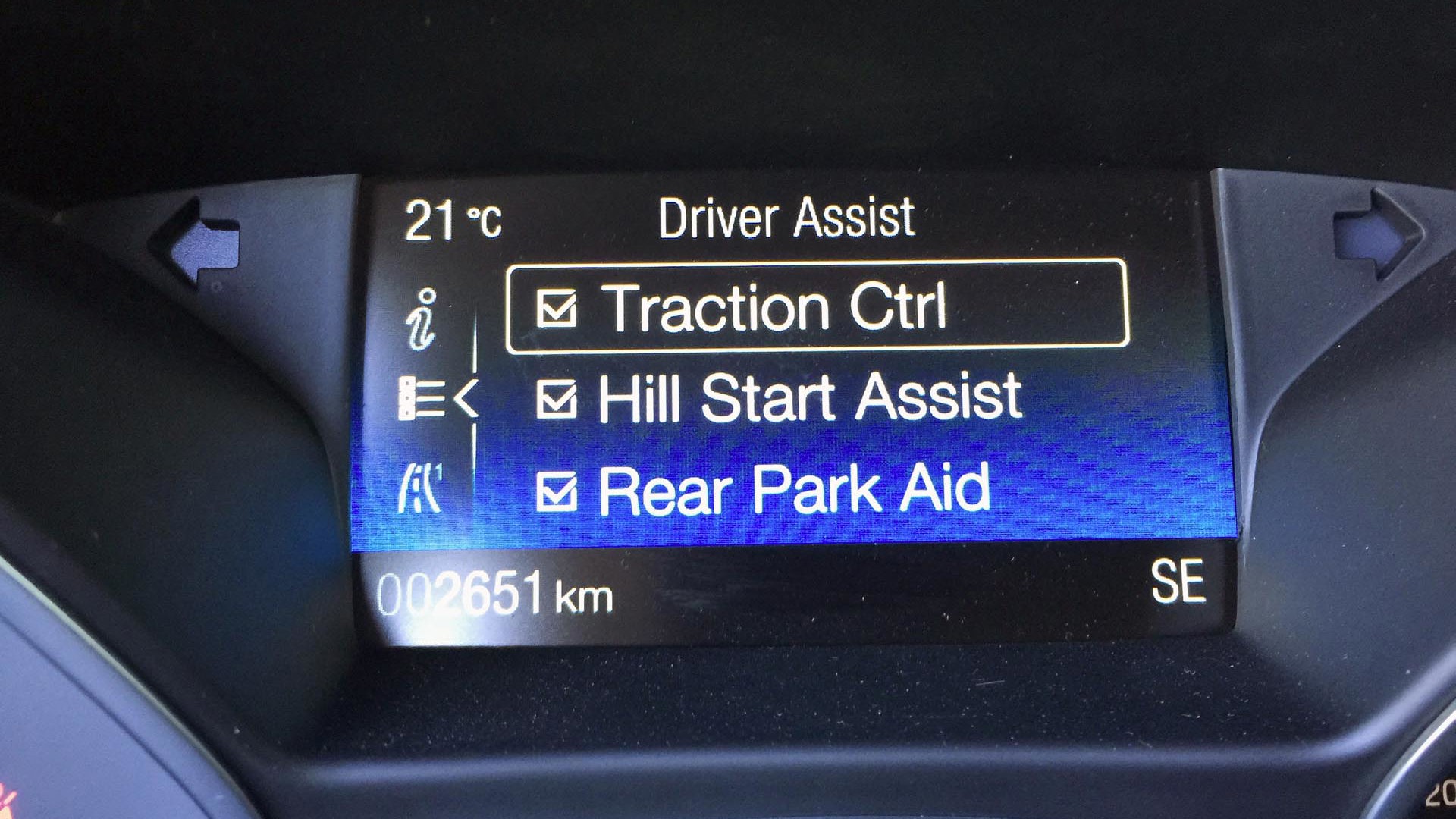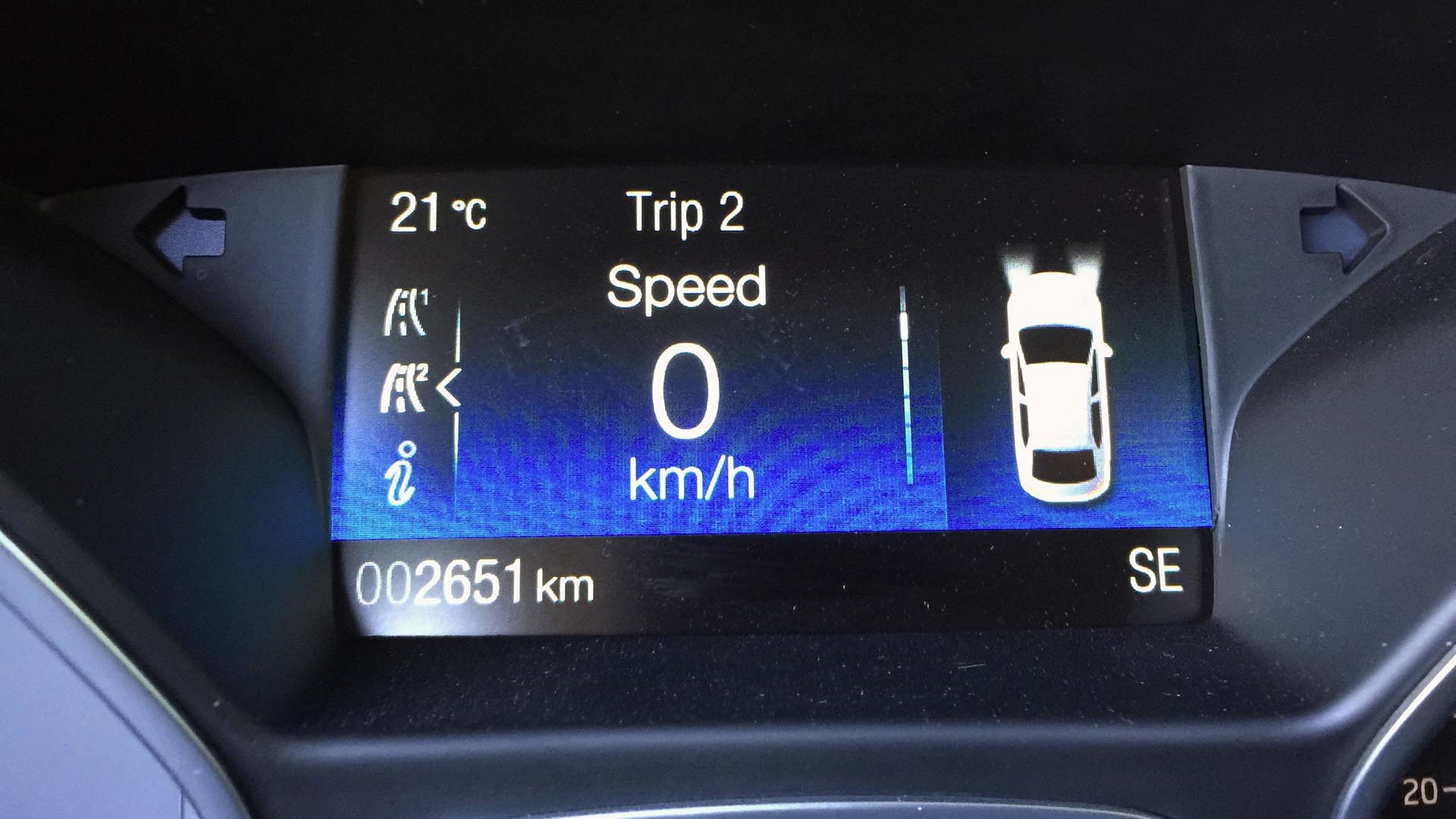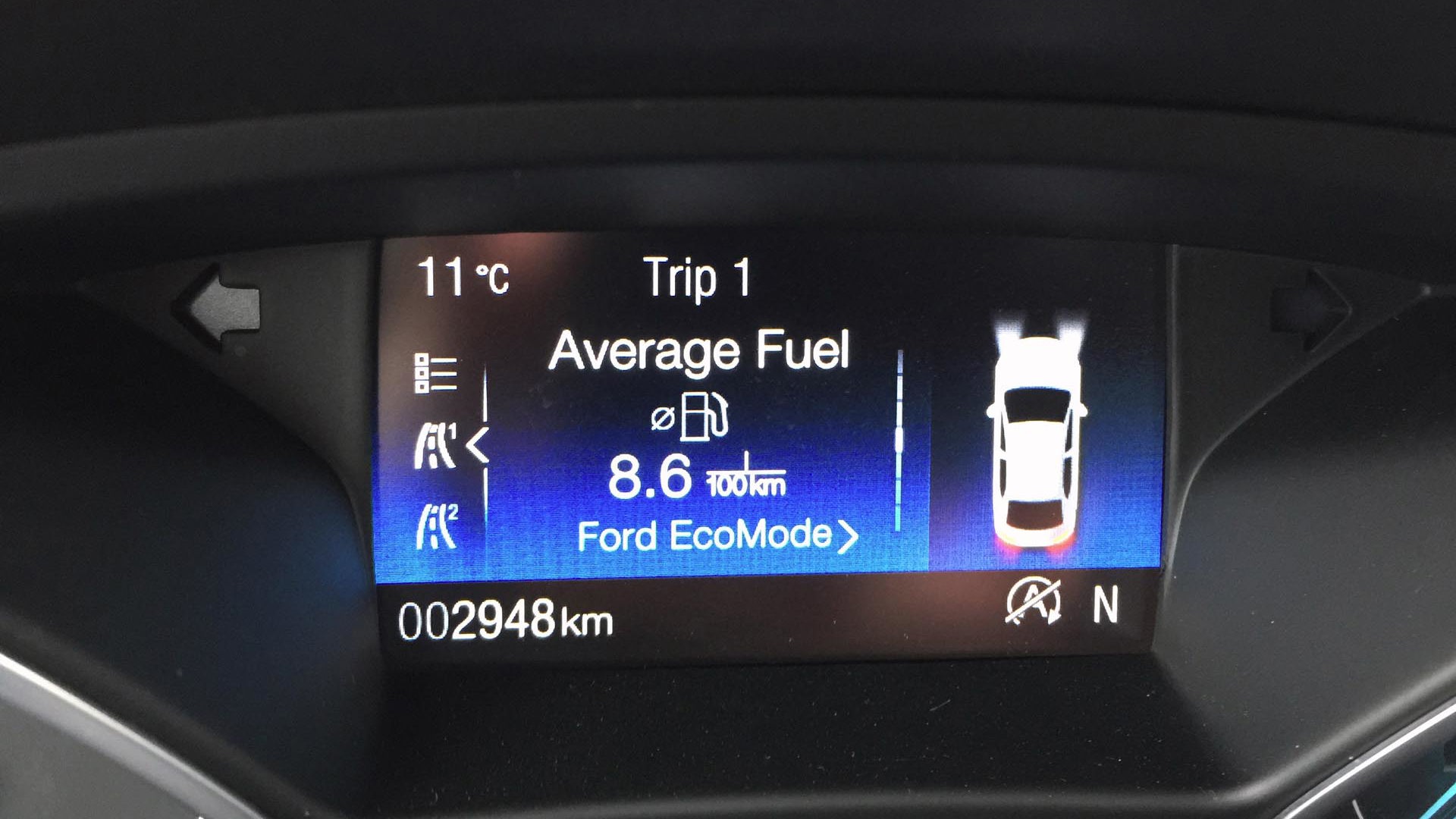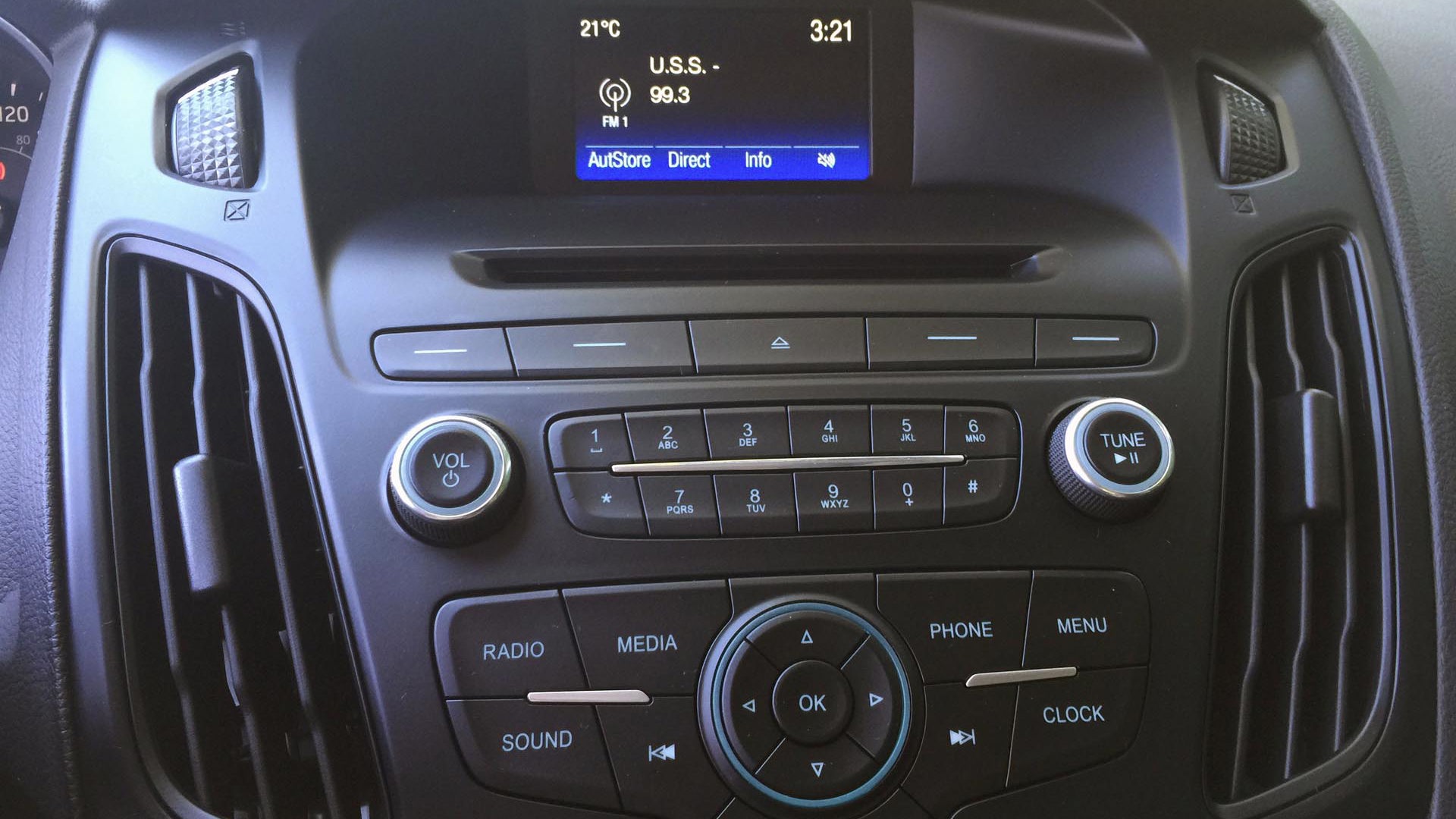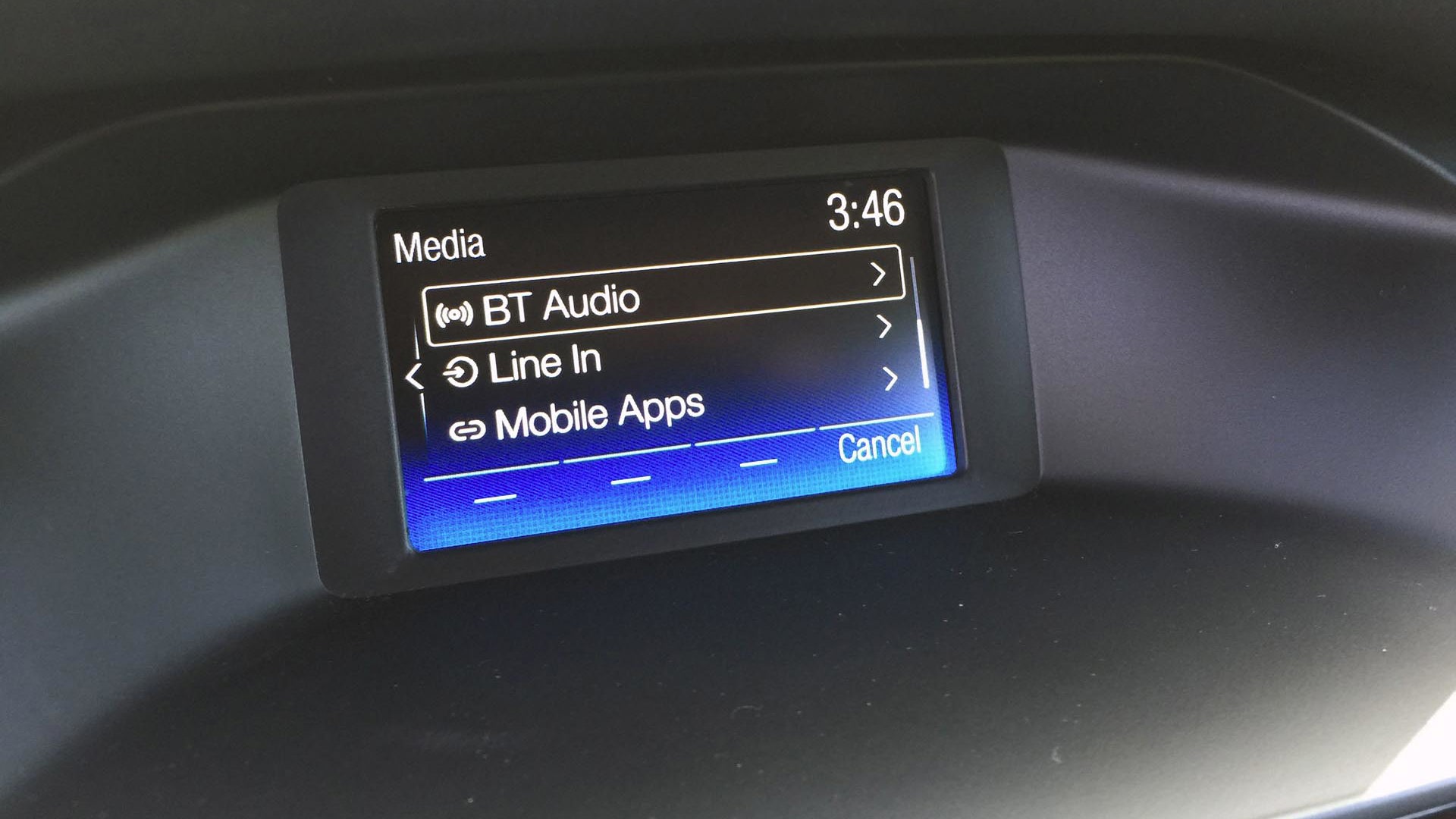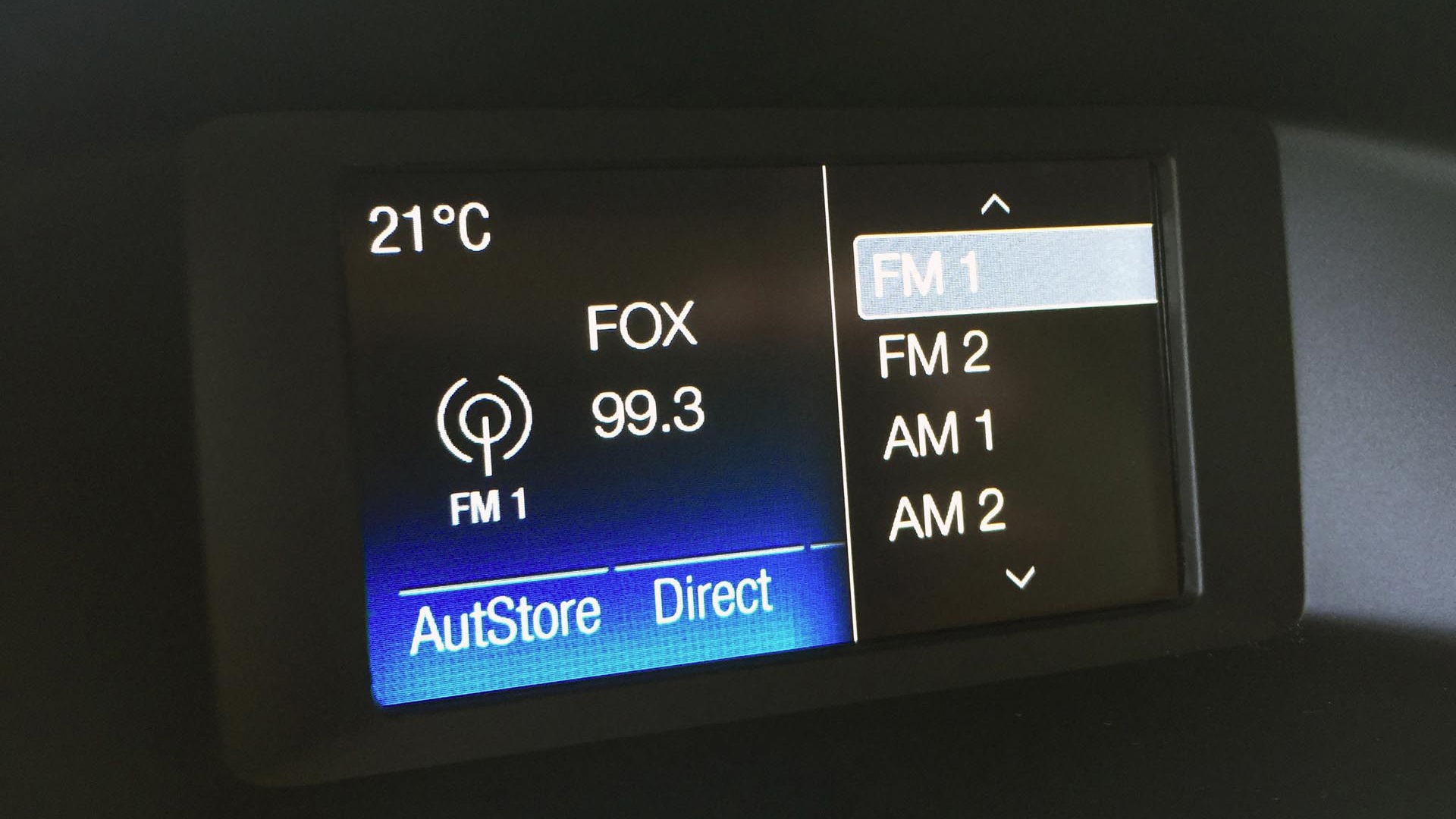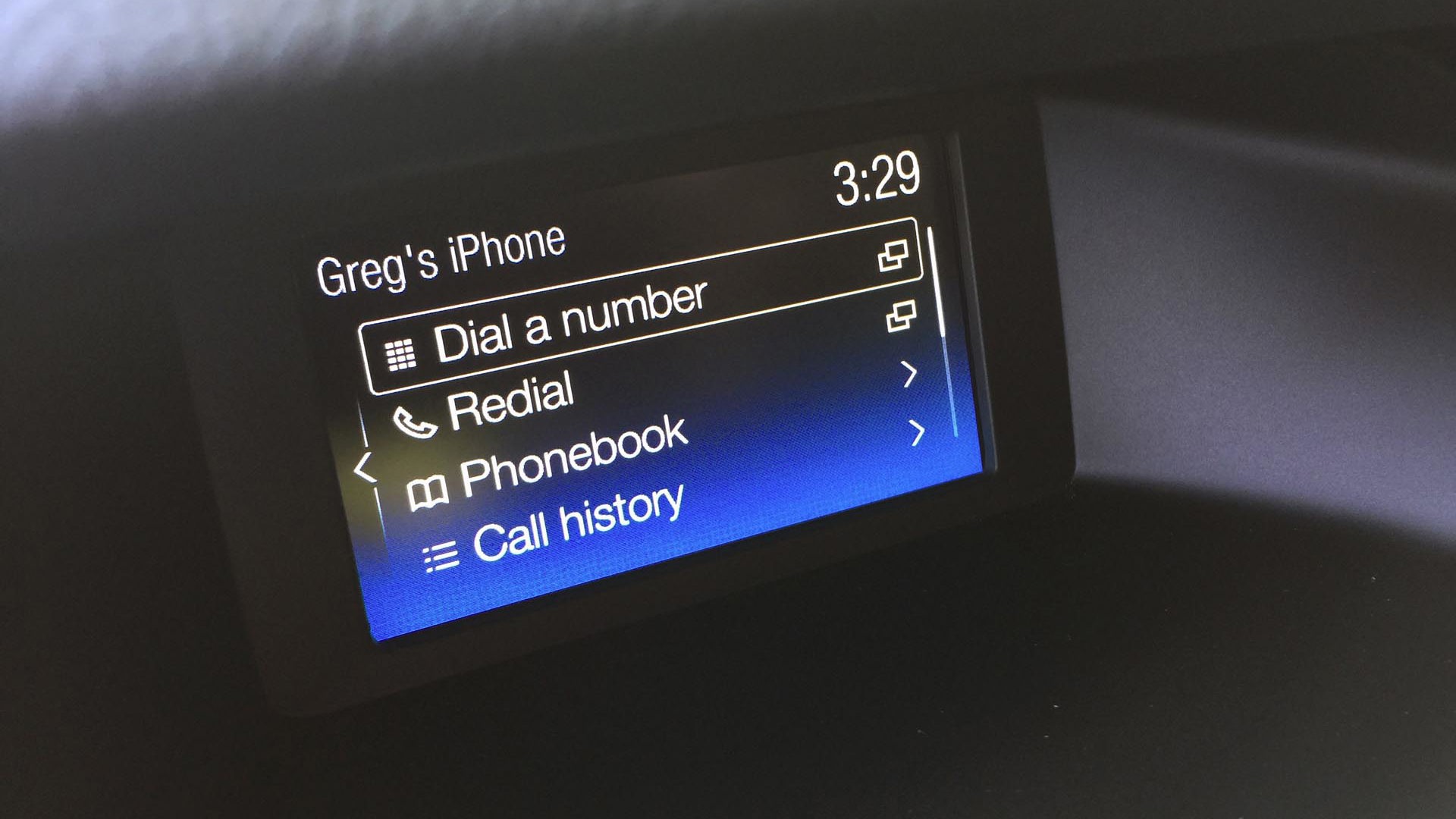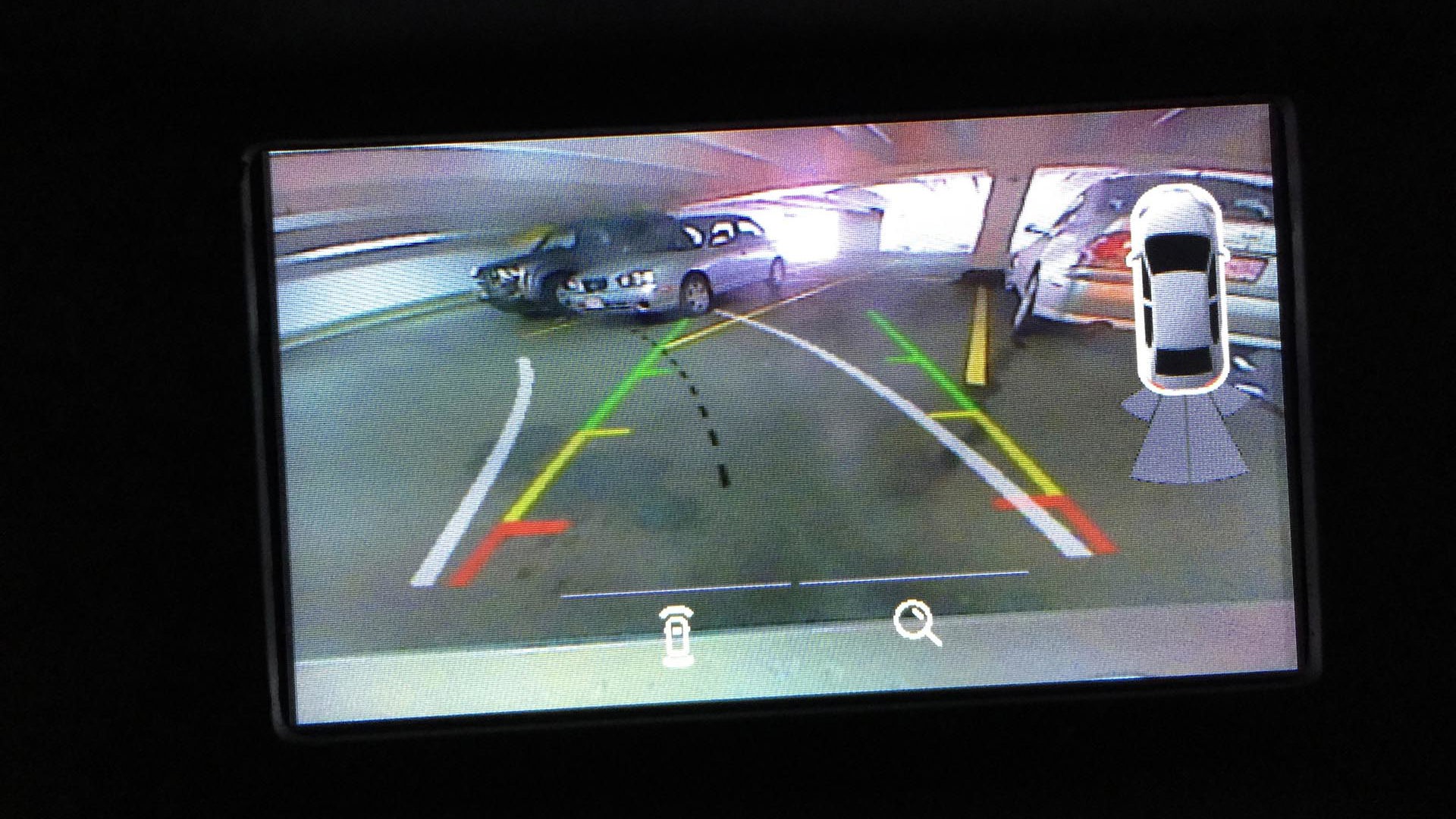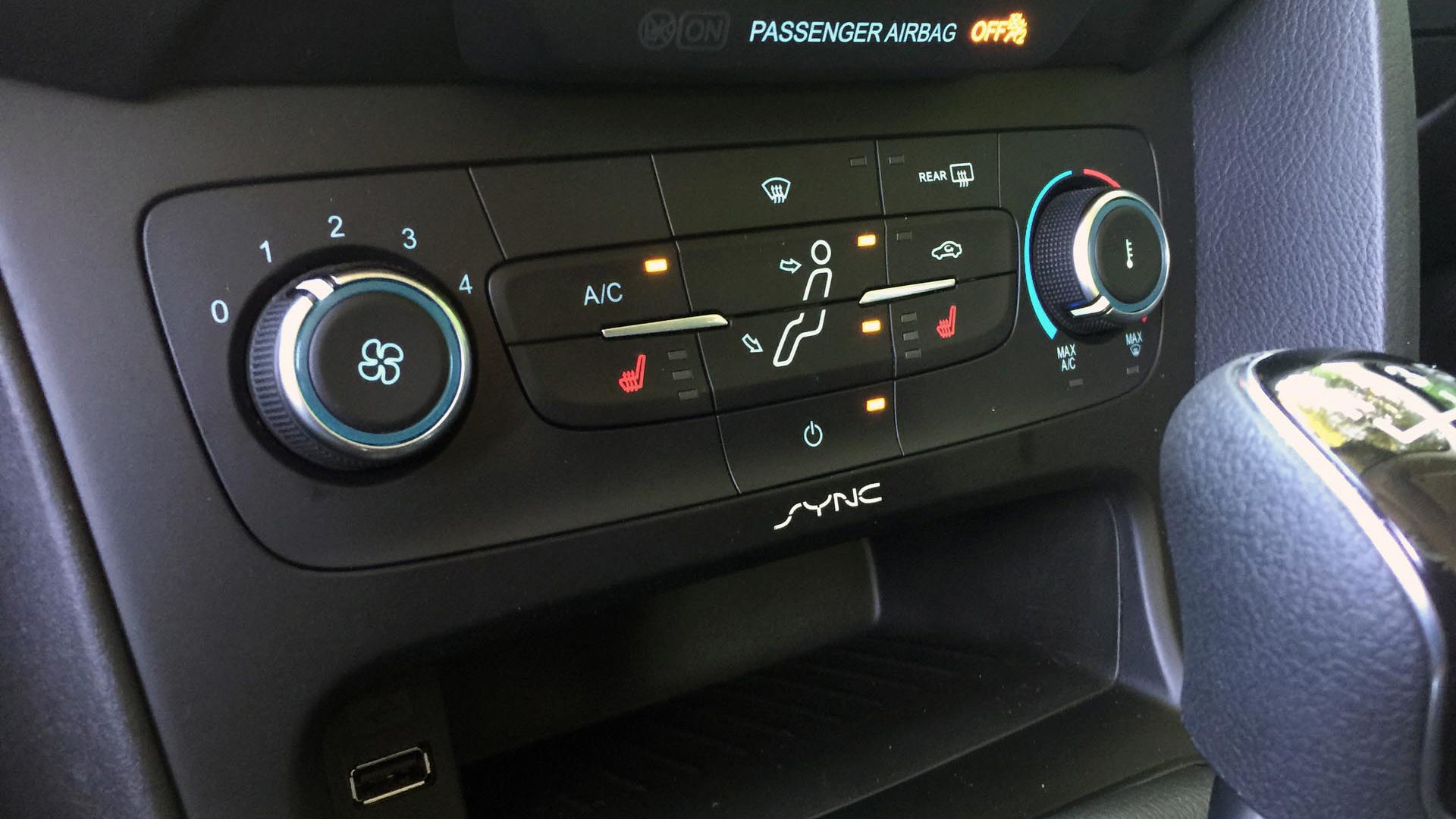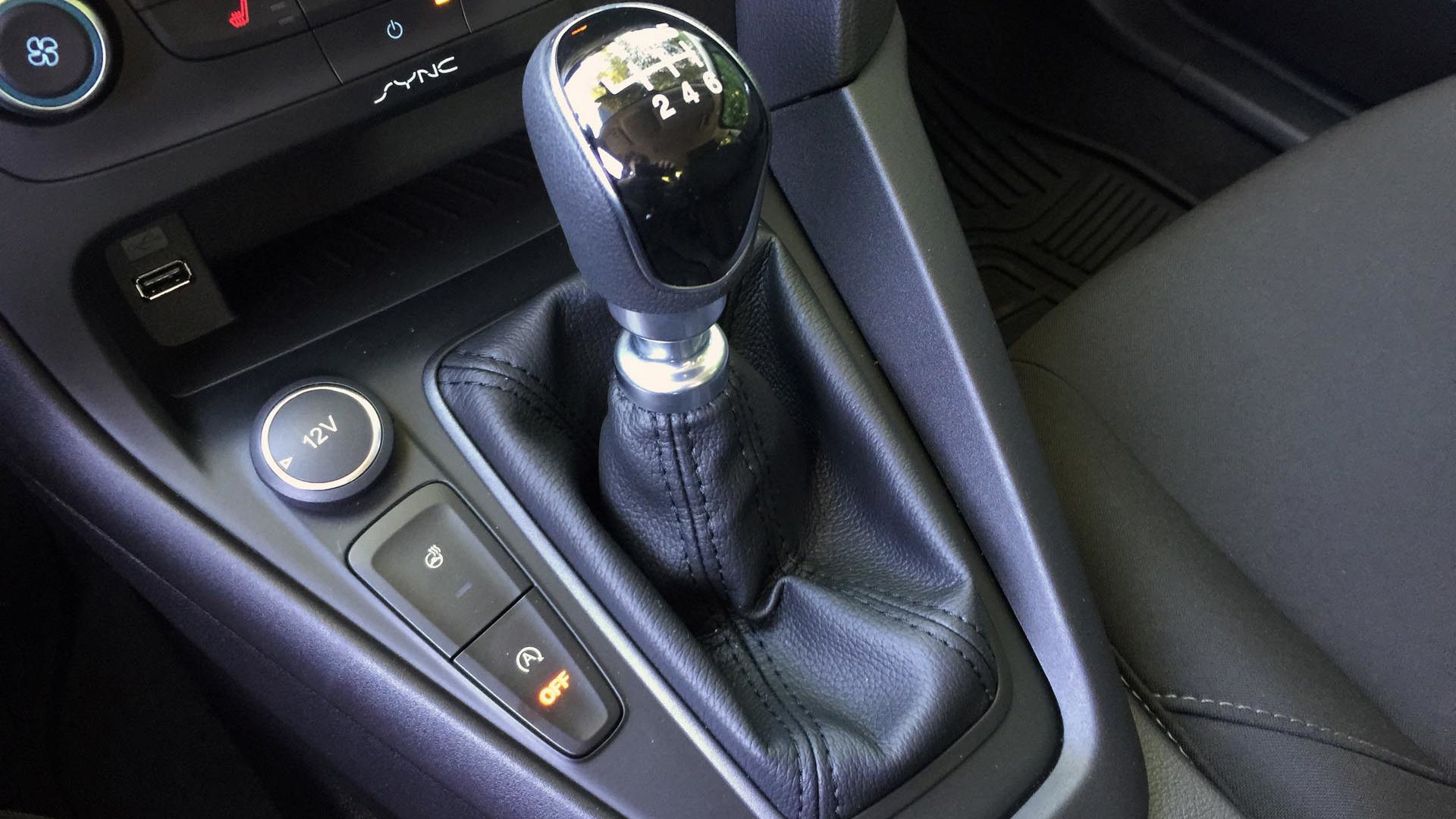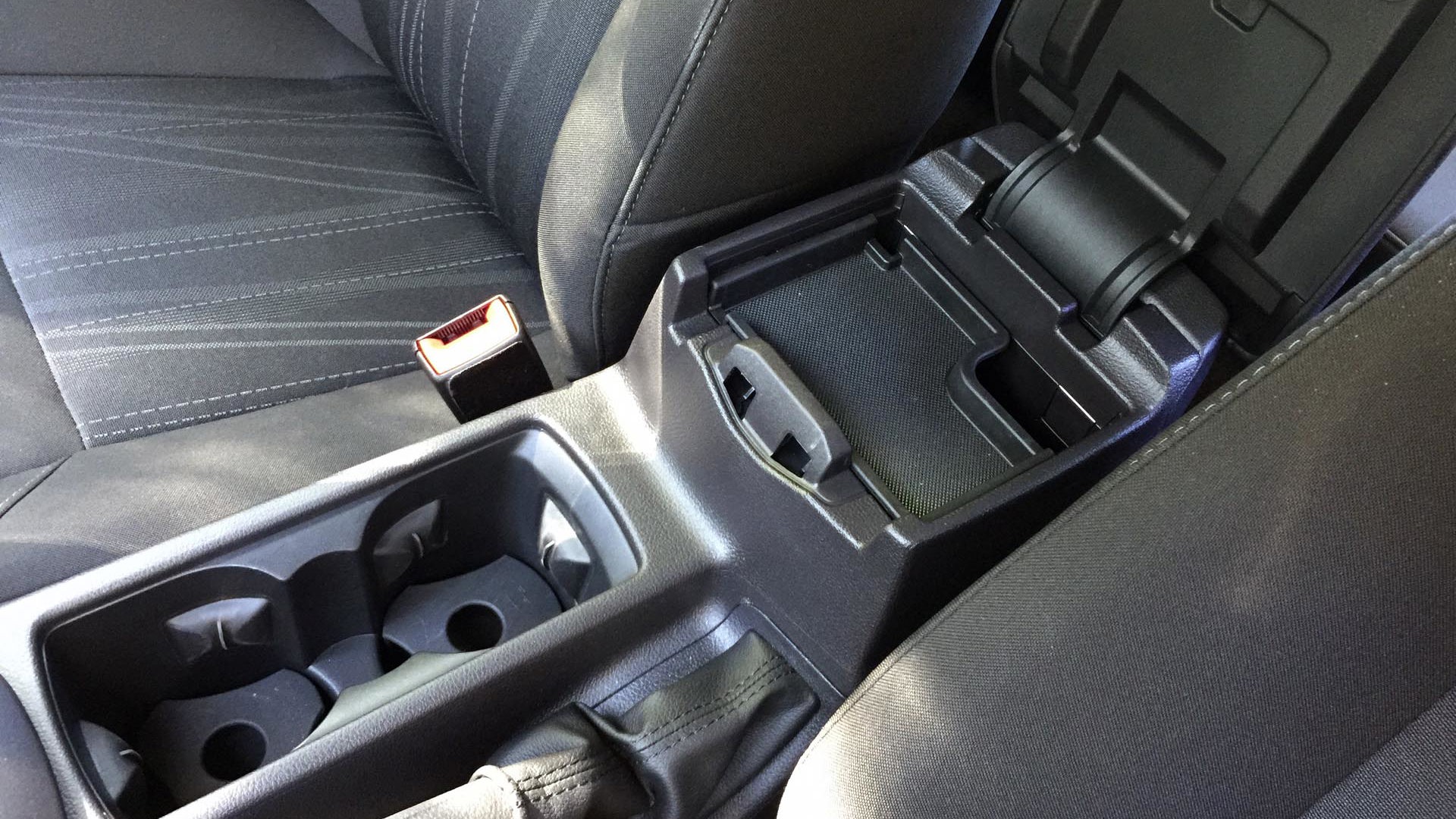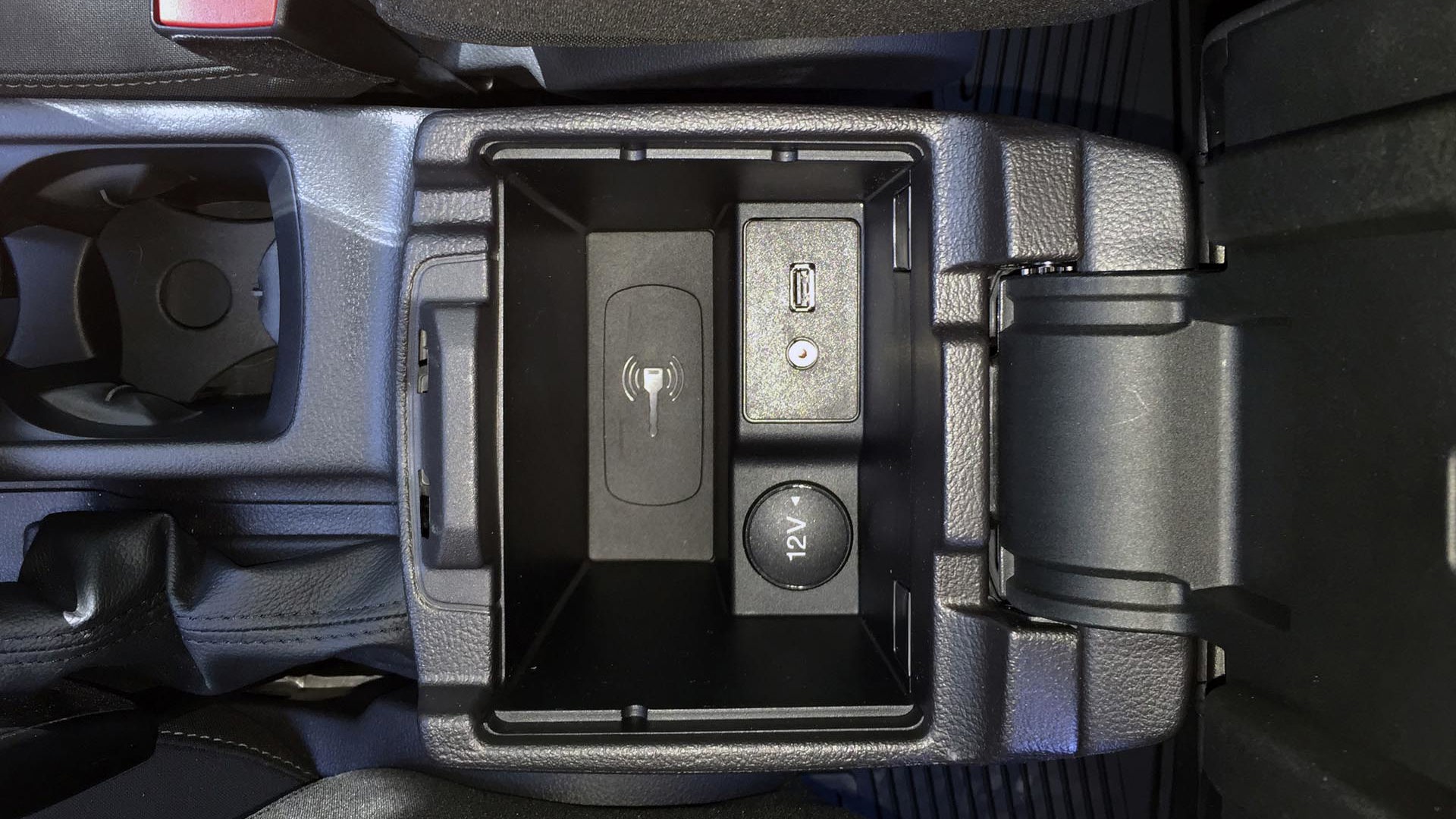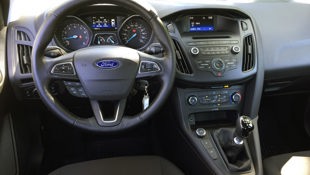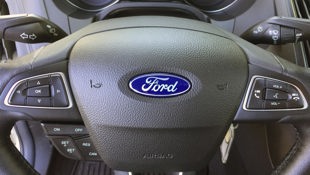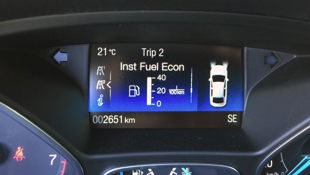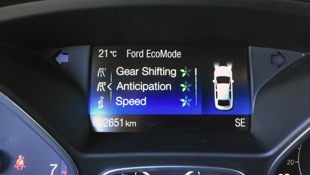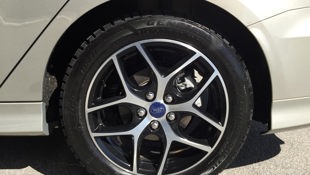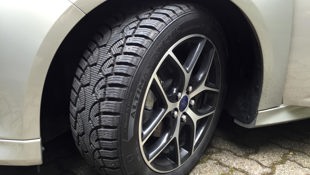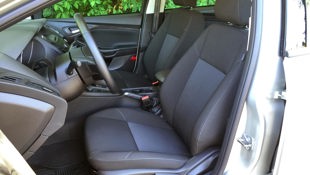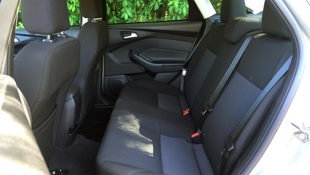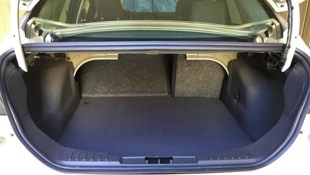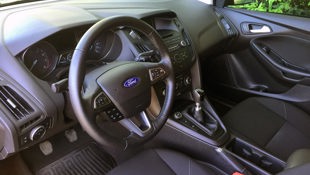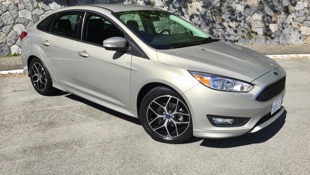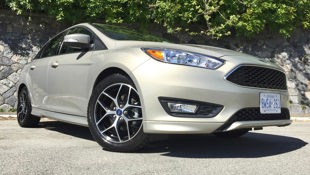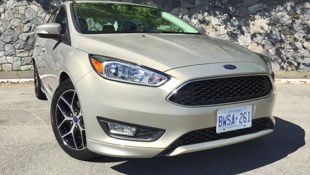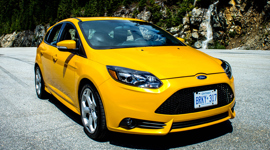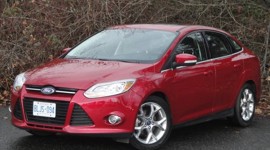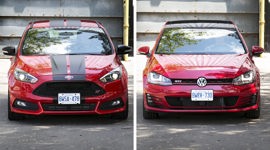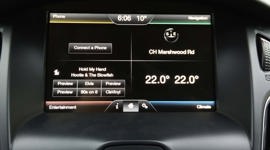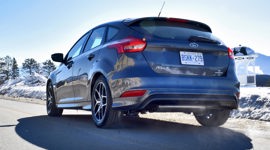 AutoTrader SCORE
AutoTrader SCORE
-
COMFORT8/10
-
PERFORMANCE6/10
-
FUEL ECONOMY7/10
-
INTERIOR6/10
-
EXTERIOR STYLING6/10
Along with some styling changes, a revised interior, a standard rear-view camera, and some new safety features, the 2015 Ford Focus is now available with a new turbocharged 123 hp 1.0L three-cylinder EcoBoost engine. This engine, which first appeared in the smaller Fiesta hatchback last year, joins the Focus’ standard 160 hp 2.0L four-cylinder engine (S Sedan, SE Sedan/Hatch, Titanium Sedan/Hatch), the 252 hp EcoBoost 2.0L four (ST Sedan/Hatch), and the 107 kW (143 hp) electric powertrain in the Focus Electric (Hatchback) bringing the available 2015 Focus powerplant choices to four.
Those who enjoy the greater control and fun-to-drive qualities of a manual transmission will find this slick-shifting six-speed manual improves the Focus’ driving experience by making it more entertaining and involving.
When I drove the 2014 Fiesta equipped with this 1.0L EcoBoost three-banger last year, I found it to be a fantastic little engine that provides a surprising amount of power with very good fuel economy through a simple combination of turbocharging, direct fuel injection, and variable valve timing in a small-displacement engine. Ford buyers in Europe love this little powerhouse: it now accounts for 32 percent of Focus sales and 26 percent of Fiesta sales over there. Ford has had to double production capacity at its engine plant in Cologne, Germany to more than 1,000 engines per day to meet demand.
But as with the Fiesta, the 1.0L EcoBoost engine in the 2015 Focus is available only with a six-speed manual transmission – an automatic is not available. That certainly limits its appeal in North America where automatics are much more popular. On the other hand, those who enjoy the greater control and fun-to-drive qualities of a manual transmission will find this slick-shifting six-speed manual improves the Focus’ driving experience by making it more entertaining and involving. If you haven’t driven a manual in a while, you might have forgotten just how much it enhances the feeling of being in control of the vehicle.
In Canada, availability of the 1.0L engine is limited to the Focus Sedan in SE trim with the manual transmission. It’s disappointing that the 1.0L EcoBoost engine is not available in the Focus hatchback as that is generally considered the sportier and more practical body style.
Compared to other compact cars, the fuel economy of the Focus 1.0L EcoBoost is very good, but not class-leading. NR Can’s official fuel economy figures for the Focus 1.0L EcoBoost are 8.1 L/100km city/5.9 hwy/7.1 combined. That’s better than the Focus 2.0L sedan with the five-speed manual which offers 9.3 city/6.7 hwy/8.1 combined, and the Focus 2.0L 6-speed automatic with 8.9 city/6.2 hwy/7.7 combined, but not the best in its class. Surprisingly, there are four compact sedans with larger and more powerful four-cylinder engines that offer equivalent or better fuel economy than the three-cylinder Focus EcoBoost - some with automatic or continuously variable transmissions.
They are the Toyota Corolla Eco (140 hp 1.8L four-cylinder, CVT with Eco Driving Mode: 7.7/5.6/6.8); Mazda3 (155 hp 2.0L SkyActiv, six-speed manual: 8.0/5.8/7.0; six-speed manumatic 7.9/5.7/6.9); Honda Civic (143-hp 1.8L four-cylinder, CVT: 7.9/6.1/7.1); and Chevrolet Cruze Eco (138 hp 1.4L four-cylinder, six-speed manual: 8.4/5.6/7.1).
There are also two diesel compact sedans with equal or better fuel economy: Chevrolet Cruze Diesel (151 hp 2.0L four-cylinder diesel, six-speed automatic: 8.7/5.1/7.1); and the VW Jetta TDI Diesel (150 hp 2.0L four-cylinder TDI diesel, six-speed manual 7.7/5.2/6.5; DSG 7.5/5.3/6.5)
Of course, the all-out fuel economy champs are the hybrids: Toyota Prius (134 hp 1.8L four-cylinder hybrid, CVT: 4.6/4.9/4.7); and Honda Civic Hybrid (110 hp 1.5L four-cylinder hybrid, CVT: 5.3/5.0/5.2 ).
However, the Focus’s hybrid and diesel competitors are considerably more expensive than the Focus’s mainstream competitors.
To save fuel in stop-and-go traffic, the 2015 Focus 1.0L EcoBoost is equipped with an automatic idle-stop system. While waiting at traffic lights, the engine will automatically turn off when the transmission is put in Neutral and the clutch is released. As soon as the clutch pedal is depressed, the engine starts again. This stop-start process is surprisingly quick, quiet and vibration-free for a three-cylinder motor. If the constant starting and stopping becomes irritating, the driver can deactivate it by pressing a button on the centre console.
To assist and encourage drivers to drive in a fuel-efficient manner, the 2015 Focus 1.0L EcoBoost includes an EcoMode display in the instrument cluster that rewards the driver with extra green leaves for proper gear shifting, anticipation and speed.
Alas, this didn’t work for me. After a week of mixed city and freeway driving in the Focus 1.0L EcoBoost, my average fuel consumption was nowhere near NR Can’s official fuel economy combined rating of 7.1 L/100 km. My onboard fuel consumption display showed an average of 8.6 L/100 km. To be fair, this willing little engine loves to be revved to its limit and it didn’t help that I tended to ignore the “shift up” arrows in the instrument cluster.
Still, NR Can’s comparative fuel consumption figures show that the Focus’s 1.0L EcoBoost engine isn’t much better, and sometimes worse, than some of its four-cylinder competitors. In my opinion, the 1.0L EcoBoost engine is better suited to smaller, lighter cars like the Fiesta, where it doesn’t have to work as hard. When I drove the 2014 Fiesta 1.0L EcoBoost last year, I averaged 6.9 L/100 km. NR Can’s official combined rating is 6.6 L/100 km.
That doesn’t mean the Focus SE Sedan with the 1.0L EcoBoost engine is an underperformer: the turbocharged three-cylinder motor provides adequate power for daily commuting needs and is surprisingly smooth and quiet when driving on the freeway – engine revs at 100 km/h are just 2,300 rpm. With maximum torque achieved at relatively low revs (125 ft-lb at 3,500 rpm), the engine’s turbo boost helps pull the Focus up slight grades without having to shift down two or three gears. However, there are times, such as when accelerating up on-ramps or driving up steep hills that you need to gear down and put your foot to the floor to get up to speed. In particular, First gear is geared very low while Second gear seems a bit too high. Starting off on a steep hill in first gear requires revving the engine past 4,000 or 5,000 rpm before shifting into Second in order to prevent power dropping off.
The only 0 to 100 km/h figure I could find for the Focus 1.0L EcoBoost was the factory figure for the European version (with identical horsepower): 11.1 seconds. That’s about 1.5 seconds slower than a Focus 2.0L sedan, according to Consumer Reports.
The six-speed manual transmission is easy to shift from gear to gear - although shift lengths are a tad long - and the Focus’s ergonomically-shaped shift knob fits perfectly in the palm of the right hand. Clutch pedal effort is moderate and I didn’t find it tiresome in stop-and-go traffic. The clutch take-up point is high and the transmission engages without any vibration or jerking unless the engine isn’t revved high enough in which case there can be some lurching. To shift into Reverse, the driver has to pull up the release lever under the knob, and move to the left and up.
The Focus is known for its balanced and forgiving handling but I was also impressed with its comfortable ride, solid, squeak-free suspension, and quiet cabin. For 2015, Ford has massaged the shock absorbers and rear suspension to reduce noise and improve steering control. The changes add up to a very pleasant freeway driving experience and a jarr-free ride over poorly kept road surfaces. Though it doesn’t have the sharp handling of the Focus ST, the 2015 Focus SE Sedan provides a nice balance of handling and ride that emphasizes comfort over performance – a combination likely preferred by 90 percent of Focus owners.
My test car was equipped with 215/50R17-inch General Altimax Arctic winter tires which, despite their aggressive tread, weren’t particularly noisy on dry roads and offered good traction during the heavy downpours typical of Vancouver’s spring weather.
Driver visibility in all directions is quite good, assisted by a third side window for shoulder checks, and a low centre rear head restraint that doesn’t impede the rear view. Unusually, the wipers wipe from the centre outwards but they clear the windscreen well and include a variable intermittent setting. All Focus models have small convex mirrors built into the side mirrors that show a wider view of the area beside the car and all 2015 Focus models now include a rear-view camera that, despite the small size of the standard dash screen, provides a good view of the area behind the car when backing up. My car also had the optional parking sensors ($350) that beep more frequently the closer you get to a solid object behind the car.
New to the 2015 Focus are a Blind Spot Warning system, rear Cross-Traffic Alert warning, and active Lane-Keeping Assist – the latter vibrates the steering wheel if the car drifts out of its lane and actually steers it back if no action is taken by the driver. However, these three features are only available on the top Focus Titanium trim level, not the S and SE trims. Also not available on the lower trim levels is Active Parking Assist which can actually do the parallel parking for you. This really works: I’ve tried it on another Focus.
The Focus’s interior has a classier, more refined look for 2015 with a predominately black colour theme accented by subtle metal trim on the centre stack controls, steering wheel and shifter. A nice touch is the piano black trim on the shift knob and real aluminum inside door handles. My only criticism is the appearance of the cloth seat fabric: it looks durable but rather utilitarian.
New for 2015 is a heatable three-spoke steering wheel with revised control buttons, a new storage bin at the bottom of the centre console next to a USB and 12-volt outlets, and revised cupholders with flexible cup grippers and a removeable base that allows coffee spills to drain into a well. Behind the cupholders is a padded centre armrest which lifts up to reveal a removable tray and a small storage bin with USB and auxiliary jacks and a 12-volt powerpoint.
The Focus’ new three-spoke leather-wrapped tilt/telescopic steering wheel feels just right in your hands and has protruding bumps at the 10 and 2 positions for supporting the thumbs on the steering wheel. The leather-wrapped wheel comes as part of the optional Winter Package ($700) which includes heated leather-wrapped steering wheel, heated front seats, power heated mirrors, and all-weather floor mats.
I found the driver’s seat to be comfortable and the driving position ideal after the standard driver’s seat height adjuster and tilt/telescopic steering wheel have been adjusted. A driver’s seat lumbar adjuster is optional in the SE. Headroom and legroom in the front seats is generous while rear headroom and legroom is adequate thanks in part to indentations in the back of the front seats. Sitting behind myself I had about 70 mm of rear kneeroom, 30 mm of headroom, and generous footroom under the front seats. The rear outboard seats are comfortable and the centre rear seat is tolerable, though three abreast is tight. There is no centre rear folding armrest.
The Focus’s illuminated gauges and colour display are easy to read at a glance, and while the standard 4.2-inch centre screen at the top of the centre dash looks small, it is sufficient for displaying audio, telephone and rearview camera images. As well, I found the protruding centre console with standard pushbutton controls and dials easier to use than Ford’s large MyFord Touch screen.
Ford’s voice-activated Sync phone and audio system allows the driver to make and receive phone calls and play music wirelessly without having to remove hands from the steering wheel or getting distracted by fumbling with dash buttons. There are more than 60 compatible apps for both iOS and Android that will work with Ford’s Sync system such as apps for navigation, traffic alerts, music, and real-time performance indicators. For trip information, the small colour screen between the gauges provides instant fuel economy, distance to empty, trip timer, digital speedometer and EcoMode indicator. The driver can scroll through menu choices by pressing buttons and arrows on the steering wheel spoke.
The Focus sedan’s 374L trunk is a good size, but while it is deep (990 mm) and wide (1,016 mm), the trunk opening is vertically narrow (406 mm) because of the way the sloping rear window reaches back over the rear deck. This may prevent some big roller bags from sliding into the trunk. Standard 60/40 split folding seatbacks and a wide pass-through opening do provide extra cargo length but the seatbacks don’t fold quite flat.
Equipped with the 1.0L EcoBoost engine and six-speed manual transmission, the Focus SE Sedan starts at $18,849. My test car also included the SE EcoBoost Package ($1,600) with 17-inch machined alloy wheels, front fog lights, full body styling kit, rear spoiler, rear disc brakes, and engine block heater; a Winter Package ($700) with heated front seats, heated leather-wrapped steering wheel, power heated mirrors, and all-weather floor mats; Reverse Sensing System ($350); and stainless steel scuff plate ($150). Including $1,565 for Freight and PDI and $100 a/c tax, the as-tested price came to $23,314 before taxes.
That’s a reasonable asking price, but with the unavailability of an automatic transmission and the less-than-impressive fuel economy from its three-cylinder engine, the Focus SE Sedan will have trouble attracting mainstream buyers in the very competitive compact sedan segment.
| Warranty: 3 years/60,000 km; 5 years/100,000 km powertrain; 5 years/unlimited distance corrosion perforation; 5 years/100,000 km 24-hour roadside assistance Competitors: |
| Model Tested | 2015 Ford Focus SE Sedan |
|---|---|
| Base Price | $18,849 |
| A/C Tax | $100 |
| Destination Fee | $ 1,565 |
| Price as Tested | $23,314 |
|
Optional Equipment
$ 2,800 (SE EcoBoost Package $1,600: 17-inch alloy machined wheels, rear disc brakes, fog lights, full body styling kit, rear spoiler, engine block heater; Winter Package $700: heated front seats, heated leather-wrapped steering wheel, power heated mirrors, all-weather floor mats; Reverse Sensing System $350; Stainless steel scuff plate $150)
|
|
